Marine Corps News
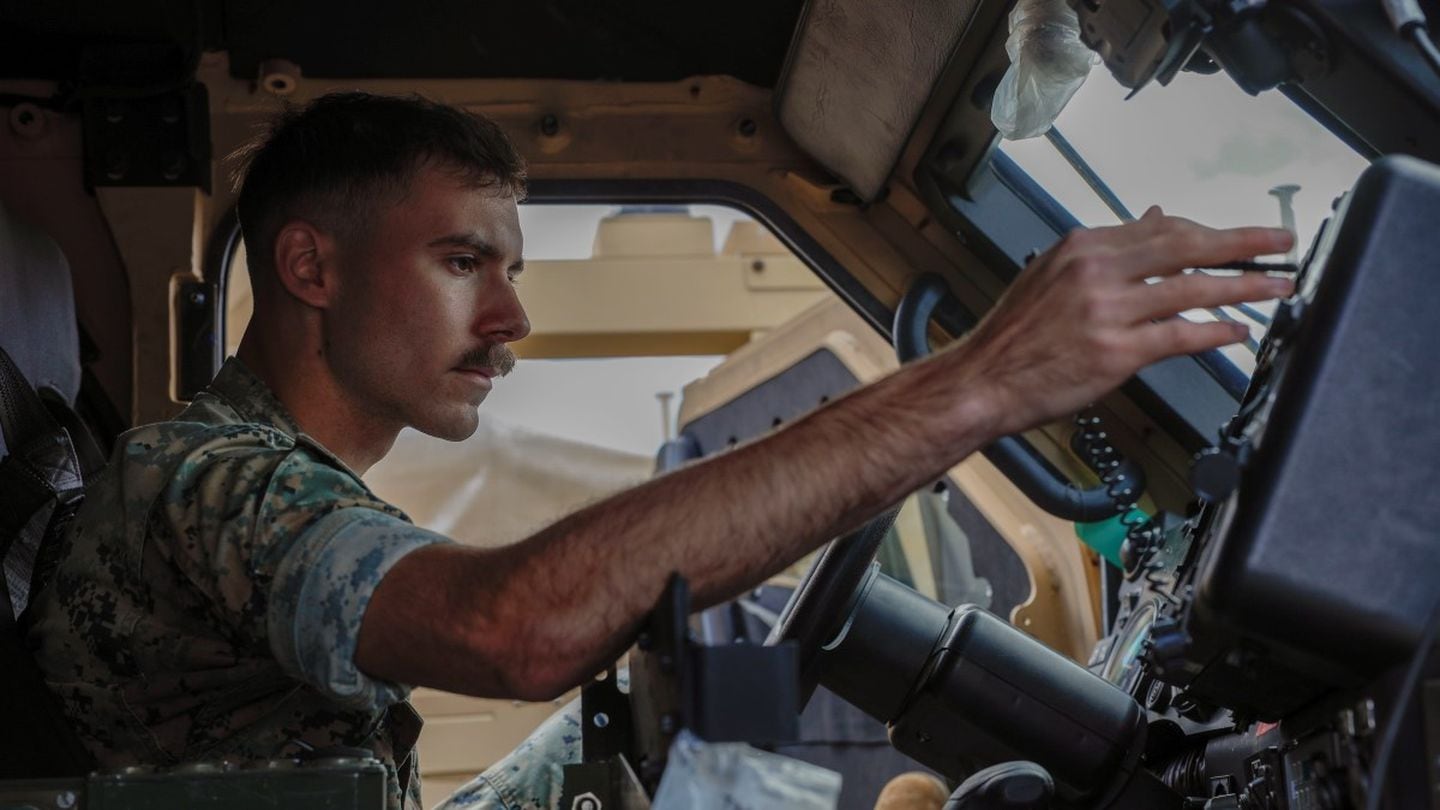
Marine corporal earns prestigious medal for saving military $140M
Cpl. Gage Barbieri received a Meritorious Service Medal in part for fixing a costly issue with a tactical vehicle’s manual while a teenage lance corporal.
A Marine truck mechanic received a medal typically awarded to more senior service members for saving the Defense Department more than $140 million through work he began as a teenage lance corporal.
Cpl. Gage Barbieri, now 21, received the Meritorious Service Medal on Friday from Col. Damon Burrows, commanding officer of 2nd Marine Division’s Headquarters Battalion. Barbieri is only the second Marine corporal to receive the Meritorious Service Medal since at least 2008, Burrows wrote on LinkedIn.
While serving as the Marine Corps’ representative to Oshkosh Defense as it revised its technical manuals for the joint light tactical vehicle, Barbieri pointed out flaws in the manuals, including one issue that could lead to rollovers.
Barbieri’s engineering acumen would save more than 900,000 person-hours of maintenance production time and more than $140 million throughout the entire life cycle of the platform, the Corps calculated.
A corporal gave a speech in front of the top Marine — and got promoted
“This was one hell of a catch by this young Marine,” said Jason Wolfe, Marine Corps production support manager to the vehicle’s program executive officer at Oshkosh, in a Marine Corps news release. “His work on this work package could possibly prevent loss of life.”
Barbieri, a native of Loxahatchee, Florida, always has been interested in the way things worked, he recounted Thursday in an interview with Marine Corps Times.
As a little kid, he would take apart his toys. Then, remembering where each screw had been, he would reassemble them, or try to build something that looked a little different.
Even then, he found it easy to retain information, Barbieri said.
“Once I’ve done it once, it’ll feel like I’ve done it a hundred times, and I can find the easiest way to do it,” he said.
At 14, he started drag racing through the International Hot Rod Association. He learned how to check over his car before getting onto the track.
But most of his background in mechanical engineering was theoretical knowledge — about aspects of systems like wiring and resistance — he gleaned from reading technical manuals, he said.
Having skipped fourth grade, Barbieri graduated from high school in 2019 at only 16. He spent two semesters studying mechanical engineering, first at Palm Beach State College in Florida and second at the University of California at Berkeley, but he didn’t love it.
Then a Marine recruiter approached him at a career fair.
“I’d tried everything else out, and I couldn’t find anything wrong with joining the Marine Corps,” Barbieri said.
He arrived at Marine Corps Recruit Depot Parris Island, South Carolina, in June 2020. After his initial training, he attended the Automotive Maintenance Technician Basic Course, where he was an honor graduate, according to the news release.
Barbieri checked into Truck Company, Headquarters Battalion, 2nd Marine Division, at Camp Lejeune, North Carolina, in April 2021. When he arrived, the joint light tactical vehicles also were new to the unit.
“As they started breaking, there was more and more different aspects we had to fix and not a lot of people with the experience that had already worked on them,” Barbieri said.
When Barbieri was about six months into working at the unit, he faced a problem that didn’t have an easy solution: how to replace hoses that ran from the vehicles’ engine bay to the back end.
It took him two weeks, but he figured it out, he said.
After that, his leaders tasked him with repairing more and more vehicles with thorny problems. Barbieri repaired more than 75 trucks, keeping the battalions’ readiness above 90%, according to the news release.
His leaders took notice.
“He could diagnose issues that most Marines couldn’t find and was able to make the repairs that civilian engineers from external organizations couldn’t,” said Master Sgt. Kenneth Byxbee Jr., Barbieri’s former motor transport maintenance chief, in the news release.
Later in 2021, while Barbieri was still a 19-year-old lance corporal, his command selected him to spend months working with Oshkosh’s tech writing team in Oshkosh, Wisconsin, on the technical manuals for the joint light tactical vehicle.
“Anytime I would find something that felt like it was out of order or would mess with the flow of things, we’d write that down,” Barbieri said.
Based on those issues, Barbieri and the rest of the team would pile into a conference room and suggest changes to the technical manuals.
One day, Barbieri noticed a problem with a manual’s instructions for replacing the steering column. Installing the replacement part that way would have stopped the steering wheel from moving, he said.
“If that happened while you were in a turn or on a highway, that could cause a rollover,” he said.
Oshkosh was receptive to what he had to say and worked with him to change the instructions, Barbieri said.
That wasn’t the only change Barbieri suggested.
Barbieri “stunned their engineers with his brilliance and change proposals for both fabrication of new vehicle components and for updating the electronic maintenance manuals that are now published and being fielded by the program office across all military branches of service,” Burrows wrote on LinkedIn.
On Friday, Barbieri received the Meritorious Service Medal, which is awarded to service members who distinguish themselves through “outstanding meritorious achievement or service.”
Barbieri celebrated later that day by ordering himself a buffalo-chicken pizza, he said.
He is set to leave the Marine Corps in June. The next step is college at the University of Central Florida in Orlando, where he plans to study mechanical engineering. He hopes of becoming a tech writer, who writes manuals himself, he said.
For now, though, he is an instructor at the course that teaches lance corporals leadership skills as they prepare for the promotion to corporal.
Barbieri said he loves the job.
“I just like getting in front of Marines and talking to them, making sure they know more than I did,” he said.
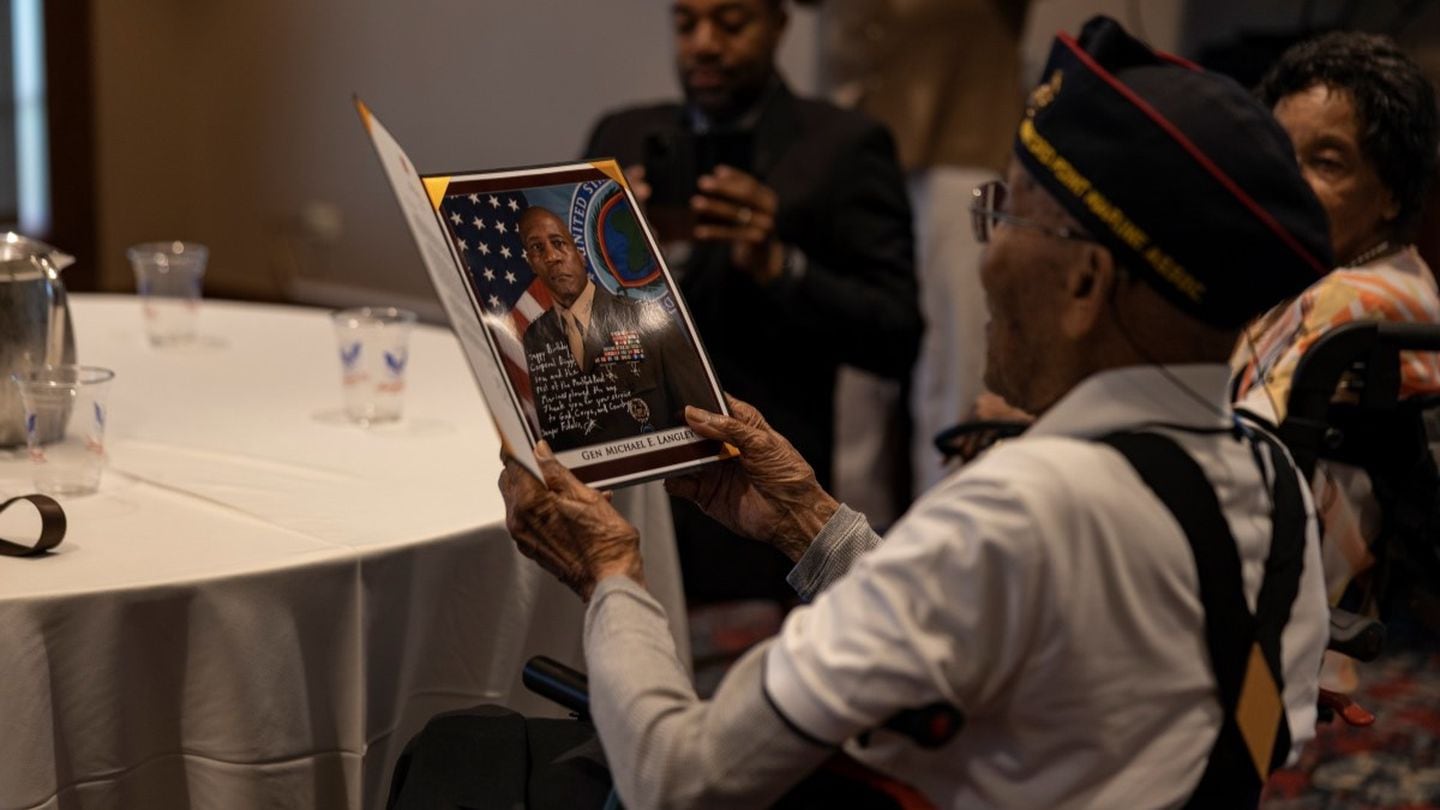
One of 1st Black Marines to serve in combat honored for 100th birthday
Former Cpl. Lawrence “Larry” Diggs, a Montford Point Marine and World War II vet, received early 100th birthday wishes from top military officials.
A World War II veteran who was part of the first cohort of Black Marines received letters of appreciation from top military and government officials in honor of his 100th birthday.
Former Cpl. Lawrence “Larry” Diggs received early birthday wishes on May 4 from President Joe Biden, Veterans Affairs Secretary Denis McDonough, Marine Commandant Gen. Eric Smith and Commander of Africa Command Gen. Michael Langley — the Corps’ first Black four-star general.
“All Marines — myself included — are better for having such fine examples of selflessness to learn from and emulate,” Langley wrote in his letter. “We are a better Corps for everything you’ve done.”
Diggs was one of the more than 19,000 Black Marines who trained at Montford Point, North Carolina, between 1942 and 1949. Although the Montford Point Marines in recent years have received recognition from Congress and the Marine Corps for their trailblazing service, it was a different story during their time in the then-segregated Marine Corps.
2 Montford Point Marines, among 1st Black men in Corps, laid to rest
For example: Although Diggs served honorably with 1st Marine Division during World War II and participated in the Battle of Peleliu, he left the Marine Corps in 1946 without any awards on his record, according to his friend, Marine veteran Keith Widaman.
After his service in the Corps, Larry Diggs worked for the United States Steel Corporation and then for the U.S. Post Office, according to Widaman.
His son David Diggs, 54, knew since childhood that his father had been in the Marines in World War II. But Larry Diggs didn’t provide many details about his service.
He would share occasional anecdotes about encountering wildlife like crabs or spiders in his foxholes on Pacific Islands, and having to remain quiet as they crawled around, but not about the fighting itself, David Diggs said.
Larry Diggs always was the peacemaker of the household, his son said. He taught David Diggs discipline, such as the importance of wiping the sink after you brush your teeth so you leave it clean for others. He expounded a philosophy of enjoying life’s journeys rather than getting wrapped up in the destination.
But there is one destination Larry Diggs has been excited about for a long time.
“My dad has been talking about looking forward to turning 100 since he turned 80,” David Diggs said.
Widaman, 40, got to know Diggs while a member of the Mizzou Student Veterans Association at the University of Missouri in Columbia. Diggs, who lived nearby, was a fixture at local veterans’ events, Widaman said, and student veterans would help him with his lawn and shrubs.
The first time Widaman, who left the Marine Corps in 2009, came to Diggs’ house, the older veteran looked out at the sky nervously, Widaman recalled. When it began to rain, Diggs excused himself and went outside to take the American flag down from his flagpole.
“You just don’t see that sort of respect for the flag and that level of patriotism anymore,” Widaman said.
In 2019, Widaman reached out to Marine Corps officials to get Diggs, then 95, invited to the commandant’s Marine Corps birthday ball in Washington, D.C.
Widaman said he raised approximately $9,000 online for plane tickets, a hotel, dress blues (Diggs’ own pair was stolen in the 1940s), a noncommissioned officer sword and a tuxedo. The next step was figuring out which medals Diggs had received as a Marine, so the older veteran could wear them to the birthday event, where he was honored as the oldest Marine in attendance.
But the only award Diggs had was the Congressional Gold Medal replica he and other Montford Point Marines had received in 2012.
Widaman told Marine Corps Times he worked with the Marine Corps to secure the awards Diggs’ service merited: the Asiatic-Pacific Campaign Medal with 1 bronze star, the World War II Victory Medal, the Navy Occupation Service Medal and a Combat Action Ribbon. None of these were listed on his service record.
Widaman presented the medals to Diggs at the African American History and Culture Museum in Washington, D.C., before the Marine Corps birthday festivities.
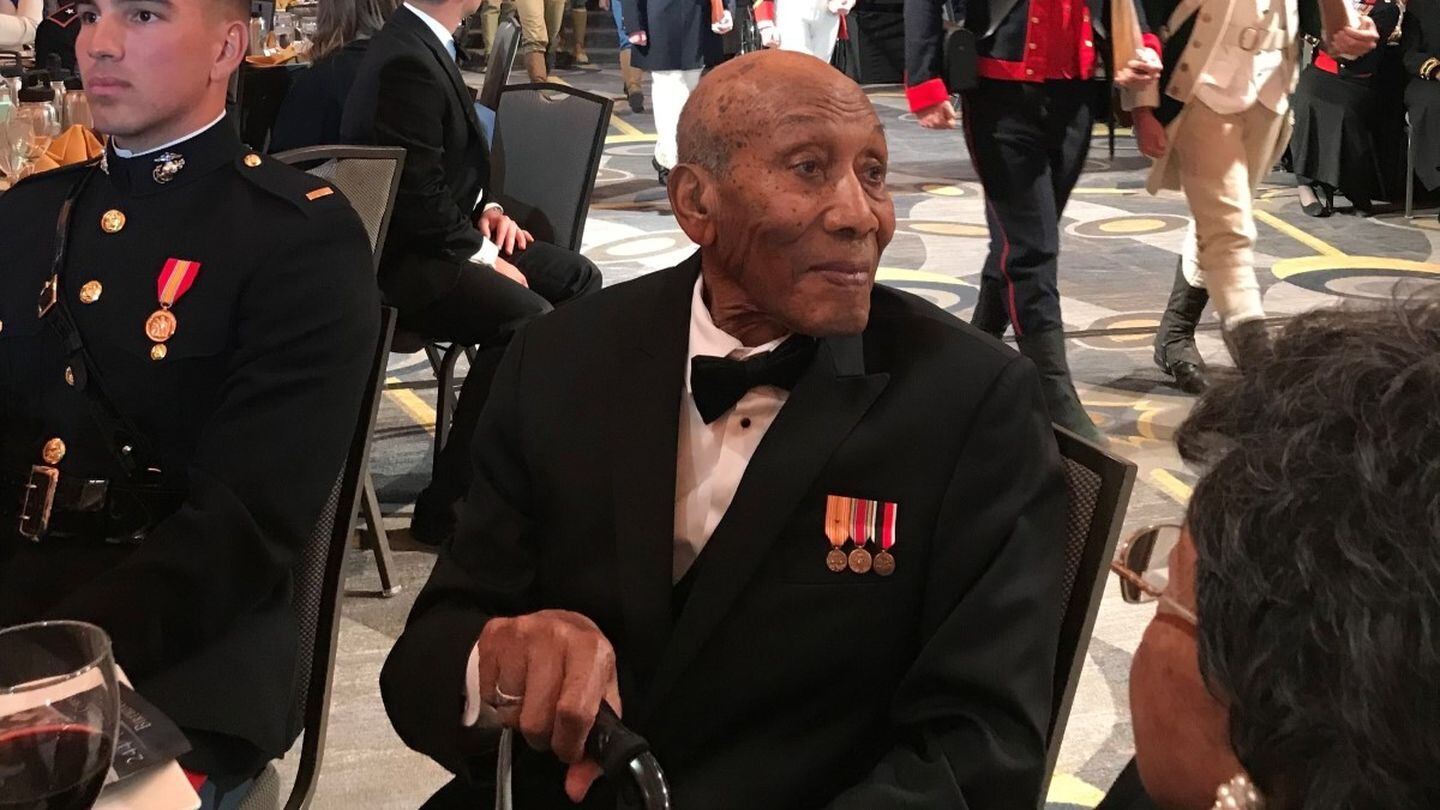
“How many men of Montford Point have lived their whole lives and passed away and they never knew that they earned medals from their actions or service in World War II, and their families still don’t know?” Widaman said.
In 2022, when Larry Diggs and his wife, Margie, were staying with David Diggs in Tacoma, Washington, the family read an article about Gen. Michael Langley becoming the first Black four-star general in the Marine Corps.
Margie Diggs suggested to David Diggs, “Wouldn’t it be great if we were able to get a letter from Gen. Langley to recognize your father at his 100th birthday?”
David Diggs decided he would try, but wasn’t sure how, he said. Then he had the idea of getting Widaman involved.
Widaman — a Defense Department civilian who emphasized he acted entirely in a personal capacity — reached out on LinkedIn to retired Gen. Gary Thomas, the former assistant Marine commandant, who pointed him in the right direction. One of Widaman’s friends, who worked in the Pentagon, helped too.
Other people chipped in. Marines from the recruiting station in Chicago volunteered to present the letters from Smith and Langley. The Bolingbrook Golf Club, in the Chicago suburb where Larry and Margie Diggs are living, agreed to host the Diggs family in its event space for free, Widaman said.
In addition to the official letter from Langley was a photo of the general with handwritten birthday wishes.
“You and the rest of the Montford Point Marines plowed the way,” Langley wrote. “Thank you for your service to God, Corps, and Country.”
The letters came as a surprise to Larry Diggs, David Diggs said.
“The combination of hearing it and then being presented with the letter and being able to actually see it and see who it was from was really quite a moment for him,” David Diggs said. “I think he was like, ‘Wow, I never thought or dreamed or even considered that I would be recognized for my 100th birthday by these people.’”
Since the May 4 event, Air Force Gen. CQ Brown, the chairman of the Joint Chiefs of Staff, has sent a letter of his own to honor the Marine veteran’s milestone birthday, which is on Saturday.
Handwritten at the bottom of Brown’s typed letter are five words: “Thanks for paving a way.”

Meet the namesake of the Navy’s newest ship, the USS Robert E. Simanek
This Marine threw himself onto a grenade to save his entrenched comrades in Korea. He absorbed the full blast — yet survived.
A new expeditionary sea base officially joined the ranks of Military Sealift Command on May 4, when the USS Robert E. Simanek was christened in San Diego, California.
The vessel bears the name of a U.S. Marine, who, during the Korean War, threw himself onto a grenade to save his entrenched comrades. Simanek absorbed the full blast — yet miraculously survived.
Robert Ernest Simanek was born in Detroit, Michigan, on April 26, 1930. After stints working for the Ford Motor Company and General Motors, Simanek enlisted in the Marine Corps on Aug. 13, 1951.
He shipped out to Korea with the 2nd Battalion, 5th Marine Regiment, arriving at an embattled strip of contested territory north of Seoul that the Marines called Bunker Hill.
On Aug. 9, 1952, elements of the 63rd and 65th armies of the Chinese People’s Volunteer Army launched the first of numerous attempts to seize Bunker Hill, outpost by outpost.
Chinese forces had already taken outposts Elmer, Hilda and Irene, when, on August 17, Pfc. Simanek was among the Marines tasked to reclaim Outpost Irene.
Simanek had been assigned a Browning automatic rifle he considered “too heavy to wield around in night fighting.” His complaints resulted in his getting a radio and a .45-caliber pistol, “which was heavier,” Simanek told the Veterans History Project.
The Holocaust survivor who became a Medal of Honor recipient
Despite being on patrol the night before and running on zero sleep, Simanek had few concerns when the order to came to patrol around Outpost Irene.
“I had been to the outpost before and thought of it as a somewhat vacation because no action had ever been there all the time I’d been on that particular part of the line,” Simanek recalled. “So, I took an old Readers’ Digest and a can of precious beer in my big back pocket and thought I was really going to have a relaxing situation. It didn’t turn out that way.”
While trudging uphill towards the outpost, mortar rounds and gunfire erupted around the Marines who were walking single file along the path. The machine gunner directly behind Simanek was immediately shot and killed, causing the Marine and five others to retreat back to the base of the hill for cover, according to a Department of Defense release. Another Marine was shot through the chest yet remained alive.
A Chinese patrol in the area had set up an ambush, but when Simanek and his squad made first contact he noted that “we almost walked in behind them.”
The surprise, then, was mutual. Soon both sides were trading shots and taking casualties. During the firefight Simanek came upon Chinese combatants and shot both. He continued maneuvering, using any cover he could find while “hoping my .45 could outgun a burp gun or two.”
The diversion worked briefly before two grenades found their mark.
“They threw in two at the same time. I kicked one away, but I didn’t think I had time to get rid of the other one,” Simanek recalled in a DOD interview.
Instead, he smothered it with his body.
“It was training, it wasn’t any mental decision on my part at all. It was an automatic thing pushed by somebody,” he added.
What followed was described in his citation:
“Determined to save his comrades, when a hostile grenade was thrown in their midst, he unhesitatingly threw himself on the deadly missile absorbing the shattering violence of the exploding charge and shielding his fellow Marines from serious injury or death.”
Fortunately for Simanek, Chinese grenades were of notoriously inconsistent manufacture. The one he encountered failed to kill him — though it did pack enough punch to inflict serious wounds to both legs.
“Somehow I managed to use the right part of my body that didn’t hurt me that much,” he later recalled of the wounds he sustained to his right hip and lower leg.
Despite his injuries, Simanek continued to fight — radioing in for a nearby tank to take out a bunker of Chinese soldiers slightly below who were pinning down the Marines with lethal fire.
As the Marines were driven back, two tried to evacuate Simanek, but were themselves so badly wounded that he told them to leave him. As Chinese fighters approached, a passing American tank fired in their direction, killing or wounding all — but also wounding Simanek in the right eye and shoulder.
Crawling along on hands and knees, Simanek got clear of the battle zone and was put aboard a helicopter. From there he was evacuated to the hospital ship Haven, then to Japan and on to Mare Island, California, before eventually arriving at Naval Station Great Lakes, Illinois, in September.
While undergoing this painful odyssey the struggle for Bunker Hill continued until September 30, when both sides, exhausted as much by rain and mud as by mutual combat attrition, stood down.
By then the Marines had retaken Outpost Irene and Bunker Hill itself, at a total cost of 96 dead. United Nations forces estimated PVA losses at about 400 killed and 3,900 wounded.
On Oct. 27, 1953, Pfc. Simanek joined six other Korea veterans in receiving the Medal of Honor from President Dwight D. Eisenhower. He was one of numerous personnel honored for sacrificing life or limb to protect his comrades from enemy grenades. Simanek, however, was among the few to jump on a grenade who did not earn his medal posthumously.
For Simanek, like many others, the war never truly left him.
“One of the hardest things about the medal is that you’re really not allowed to forget about it,” he said. “People will, in a good meaningful way of trying to compliment you, bring about some memories that maybe you’d like to get rid of.”
After his discharge, the Detroit native earned a degree in business management at Wayne State University. In 1956 he married Nancy Middleton, with whom he had a daughter. Simanek would go on to work in positions in the automobile industry and in the Small Business Administration before retiring in 1992.
Robert Simanek died in Novi, Michigan, on Aug. 1, 2022 at the age of 92, and is buried at Great Lakes National Cemetery in Holly, Michigan.
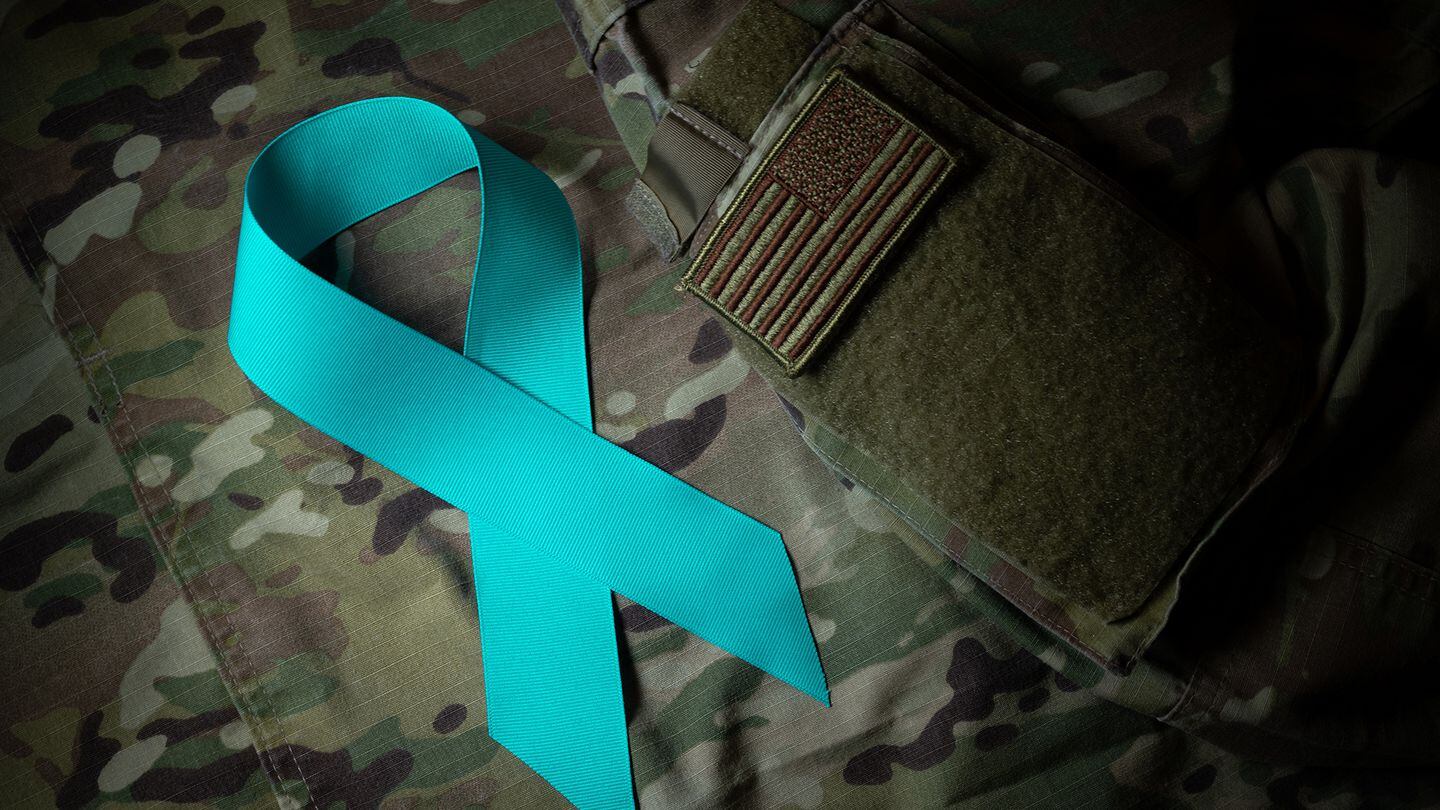
In reversal of recent years, military sex assault reports drop
A confidential survey also found a 19% drop in the number service members who said they'd experienced some type of unwanted sexual contact.
The number of reported sexual assaults across the military decreased last year, and a confidential survey found a 19% drop in the number of service members who said they had experienced some type of unwanted sexual contact, according to new figures obtained by The Associated Press. Both are dramatic reversals of what has been a growing problem in recent years.
More than 29,000 active-duty service members said in the survey that they had unwanted sexual contact during the previous year, compared with nearly 36,000 in the 2021 survey, according to several defense officials. The decrease is the first in eight years.
Sexual assault in the military keeps rising while prosecutions fall
At the same time, 8,515 sexual assaults were reported last year involving members of the U.S. military, a decrease from 8,942 in 2022. And officials said the U.S. military academies also saw fewer reported sexual assaults in the school year that ended last spring versus the previous year.
President Joe Biden hailed the improved numbers as he spoke Wednesday to his military commanders, who were gathered at the White House.
“I’m proud that for the first time in nearly a decade, rates of sexual assault and harassment are, within the active-duty forces, are down. They’re down. That’s because of your leadership,” Biden said.
Senior defense officials said the assault numbers are still far too high and there is much more work to do, but they expressed cautious optimism that the military could be turning a corner, with help from an array of new programs and increased personnel. Sexual assault reports in the military have gone up for much of the last decade, except for a tiny decrease in 2020, during the COVID-19 pandemic shutdown.
The officials spoke on condition of anonymity because the report has not been publicly released.
While it’s difficult to point to any one reason for the recent decreases, the Defense Department has been making a series of changes over the past year that officials say may be contributing to the shift. The services are using an infusion of more than $1 billion in the last two budgets to improve programs and hire up to 2,500 personnel as part of a new “prevention workforce” and place them at military installations around the world. So far, more than 1,000 have been hired.
The Pentagon releases a report every year on the number of sexual assaults reported by or about troops. But because sexual assault is a highly underreported crime, the department does a confidential survey every two years to get a clearer picture of the problem.
Watchdog finds ‘gaps’ in DON sexual misconduct policies
The data for the fiscal year that ended Sept. 30 also suggests that a greater percentage of service members came forward to report sexual assaults, which has been a key goal for the Defense Department. About 25% of those who said on the survey that they had faced unwanted sexual contact reported it last year, compared with 20% in 2021, according to defense officials and documents reviewed by the AP.
Defense officials have long argued that an increase in reported assaults is a positive trend because so many people are reluctant to report them, both in the military and in society as a whole. Greater reporting, they say, shows there is more confidence in the reporting system and greater comfort with the support for victims, and results in a growing number of offenders being held accountable.
But the Pentagon and the military services also have come under persistent criticism and pressure from members of Congress to reduce sexual assaults and harassment in the military. Service leaders and lawmakers have all argued that the sexual assaults and harassment contribute to the military’s struggles to meet recruiting goals.
Alarmed members of Congress have enacted a number of changes, including a new prosecution system that uses independent lawyers. Lawmakers argued that some commanders failed to take victims’ complaints seriously or tried to protect those in their units who faced accusations, making victims reluctant to come forward.
The services have long worked to develop programs to prevent sexual assaults, encourage reporting and bolster confidence in the system. The Army, for example, has a new training program for soldiers when they report to their first duty station that shows service members acting out dangerous situations and teaches troops how to respond.
The number of reported sexual assaults decreased across all the military services, which is a marked improvement over the 2022 fiscal year, when the number of sexual assaults in the Navy, Air Force and Marine Corps all shot up significantly. A 9% drop in Army reports in 2022 offset the increases in the other branches so that there was an uptick of about 1% for the whole military. The Army is the largest military service.
According to officials, the number of sexual assault reported in the Army decreased from 3,718 in 2022 to 3,507 last year, while the Navy went from 2,052 to 1,942 and the Air Force from 1,928 to 1,838. The Marine Corps had the smallest decline, going from 1,244 to 1,228.
Included in the 8,515 total were 541 service members who reported an assault that occurred before they entered the military and 612 civilians who said they were assaulted by a member of the military.
Sexual assault prosecutions officially out of the chain of command
At the military academies, the number of assaults dipped from 155 in 2022 to 124 in the 2023 school year. Service commanders are still working, however, to address what was a dramatic spike in 2022.
The latest survey also showed that nearly a quarter of all active-duty women said they’d faced sexual harassment, a decrease from the 28.6% in 2021.
One troubling area continues to be female service members’ satisfaction with the help they get when they make a complaint and their overall trust in the system and their leaders.
While a large percentage of victims seek out sexual assault response staff, fewer than 70% are happy with the services they get. And that hasn’t changed much over the past several years. Roughly the same percentage says they trust the military to respect and protect them and their privacy.
Officials said the hiring of more permanent, full-time workers will help improve that process.

Marine charged with threatening mass shooting of white people
Joshua Cobb, 23, who was discharged from the Marine Corps after serving for less than a year, was charged Monday with threatening to “erase” white people.
A man who was discharged from the Marine Corps on Friday after serving for less than a year was arrested Monday for making online threats to kill white people.
Former Pfc. Joshua Cobb, 23, of Trenton, New Jersey, was charged via complaint with one count of transmitting a threat in interstate and foreign commerce, the U.S. Attorney’s Office for the District of New Jersey said in a news release.
Records of the alleged threats start in December 2022, when a social media user with an IP address linked to Cobb’s residence in New Jersey declared he was planning to “erase” white people in a shooting, according to the complaint.
Chinese national detained after breaking onto Marine base in California
“I want to cause mayhem on the white community,” the user wrote. “The reason i specifically want to target white people is because as a black male, they will NEVER understand my struggles.”
On another social platform, a user who went by the name “1dayUsuffer” posted in spring 2023 of his hope of becoming a serial killer.
The user made several posts expressing a desire to commit mass violence, and said the posts would serve as “evidence” and “clues” for “when im done.”
“I’d probably (overdose) on my own adrenaline after the 10th body goes down,” he wrote in one post.
In another post, the user said he had killed his cat with a crossbow.
“Very bloody scene and I loved it,” he wrote.
The user described a family history of schizophrenia but said he refused to get evaluated lest he lose his firearms license.
FBI agents later used IP addresses and other clues to link Cobb to the account, the complaint said.
In June 2023, Cobb started boot camp at Marine Corps Recruit Depot Parris Island, South Carolina, Marine spokeswoman 2nd Lt. Giselle Cancino said in an emailed statement to Marine Corps Times on Tuesday. He became a private first class in September 2023.
He checked into Marine Corps Air-Ground Combat Center Twentynine Palms, California, in February, as a rifleman with 1st Battalion, 7th Marine Regiment, according to Cancino.
FBI agents seized Cobb’s phone and interviewed him on the California base April 2, according to the complaint.
During the interview, Cobb admitted he had written the posts, and he specified the gym and grocery store he had considered as targets for an attack, the complaint said. He told the FBI agents he had access to guns through people he knew, including a relative who legally owned firearms.
When FBI agents informed him that his cellphone was being seized, Cobb became irate and said, “These are the things that make someone want to do the things we talked about,” according to the complaint.
On his phone were notes from April 2023 and May 2023 expressing his desire to kill and detailing how to bring guns into New Jersey, according to the complaint.
The Marine Corps discharged Cobb on Friday, according to Cancino, who did not specify the nature of the discharge. During his brief time in the Marine Corps, Cobb received a Certificate of Commendation but no personal awards, and he did not deploy, the spokeswoman said.
Cobb has been in federal custody since his arrest Monday, according to court records. His bail hearing is set to occur this Friday.
He faces a maximum penalty of five years in prison and a $250,000 fine, according to the news release.
Saverio Viggiano, a federal public defender with the District of New Jersey who is representing Cobb, said the public defender office doesn’t comment on cases.

2 people in ICE custody after attempting to breach Virginia Marine base
The pair drove past a holding area in Quantico, Virginia, as military police prepared to administer the standard vetting procedures.
The Marine Corps prevented two people from breaking onto a Marine installation in Virginia on May 3 and turned them over to U.S. Immigration and Customs Enforcement.
The two people drove up to the Fuller Road Gate of Marine Corps Base Quantico, Virginia, in a box truck and were stopped by military sentries, Capt. Michael Curtis, a spokesman for the base, said in a statement to Marine Corps Times on Tuesday.
“When asked, the operator of the truck informed the military police officers they worked for a company subcontracted by Amazon and were making a delivery to the U.S. Post Office located in the Town of Quantico,” Curtis said in the statement.
Because the two had no affiliation with the Marine base and no credentials to enter it, military police officers directed them to go to a holding area to undergo standard vetting procedures, according to Curtis. But the driver blew past the holding area and attempted to drive onto the base.
Chinese national detained after breaking onto Marine base in California
Officers put up the vehicle denial barriers, blocking the truck from getting any farther onto the base, and detained the pair.
No one was injured, according to Curtis.
The Marine Corps later turned the pair over to U.S. Immigration and Customs Enforcement. That agency did not respond by time of publication to a Marine Corps Times request for more information about the two people who were detained.
“When any vehicle and its occupants fail to comply with the clear direction of the on-duty Police Officers, specific steps are taken by those officers to restrict any further access,” Curtis said in the statement. “Those actions by our on-duty Police officers helped maintain the safety and security of all who live and work on Marine Corps Base Quantico.”
Potomac Local News, which first reported the attempted breach, reported hearing from multiple unnamed sources that one of the truck’s occupants was a Jordanian national who had recently crossed the southern border into the United States and that one occupant was on the U.S. government’s terrorist watch list.
Located in northern Virginia, Marine Corps Base Quantico is less than an hour’s drive from Washington. To enter the town of Quantico, Virginia, where the pair claimed to be heading, vehicles have to drive through the Marine installation.
The installation is home to the Corps’ Combat Development Command, which is dedicated to modernizing the force, plus a smattering of Marine schools and other elements. It also hosts some activities of the FBI, Naval Criminal Investigative Service, Defense Counterintelligence and Security Agency, Defense Intelligence Agency and other federal agencies.
In January 2023, a car caught fire after coming into contact with vehicle denial barriers when its driver tried to gain unauthorized access to Marine Corps Base Camp Pendleton, California.
Military police in September 2023 shot at and ultimately detained a driver who had gained unauthorized access to Marine Corps Air Ground Combat Center Twentynine Palms, California. In March, military law enforcement at the same base nabbed a Chinese national who had tried to get onto the same base.
Chinese nationals have accessed military installations and other sensitive facilities in the United States around 100 times in recent years, sometimes by posing as tourists, The Wall Street Journal reported in September 2023.

Psychedelic therapy data ‘speaks for itself,’ VA official says
The VA’s top health official said the agency is prepared to spend “at least in the millions” on clinical trials of psychedelic therapies for PTSD.
The Department of Veterans Affairs’ top health official on Friday said the agency is prepared to spend “at least in the millions” of dollars on clinical trials of psychedelic therapies, pending a U.S. Food and Drug Administration decision on midomafetamine, or MDMA, assisted treatments expected later this year.
VA Under Secretary Shereef Elnahal’s comments were delivered to conference attendees during a conversation with Jason Pyle, executive director of Healing Breakthrough, an organization working to treat veteran PTSD through MDMA-assisted therapy.
Elnahal discussed how the VA will play a pivotal role in answering more specific questions surrounding psychedelic therapies, such as the extent of treatment necessary to have an impact on veterans.
Further researching just how intensive these therapies have to be will better prepare the VA to respond to the surge in demand they expect following potential approval by the FDA, Elnahal said.
“We can start to answer some of the questions that the broader clinical and scientific community has,” Elnahal said. “Do you actually need eight hours every three sessions for an MDMA therapy? Do you actually need two clinicians per patient for that duration?
“The moment the FDA approves MDMA ... we’re going to see demand for this go through the roof, especially among the veteran population.”
Elnahal also noted the VA would like to study the possibility and effectiveness of group therapy sessions.
Preparations also include understanding what a treatment must entail to be the most medically — and economically — effective.
On the table, too, is expanding to other therapies, such as ibogaine and psilocybin, he added.
“This initial request for proposals is supposed to be the spark that fuels even more research,” Elnahal said. “Chances are that — because of the similar mechanisms of action, similar effect areas in the brain — we can see unique benefits of some of these other compounds. We’re proving the case that the federal government is no longer afraid to engage in this.”
A second phase III trial by Lykos Therapeutics, formerly the MAPS Public Benefit Corporation, found more than 86% of participants who received the MDMA-assisted therapy for PTSD experienced “clinically meaningful” improvement 18 weeks after starting the trial.
More than 71% of participants who participated in MDMA-assisted therapy no longer met the diagnostic criteria for PTSD at the end study, compared to just over 46% of participants who had the placebo plus therapy. The VA is currently conducting 13 multisite clinical trials, Elnahal told the audience.
In February 2024, MDMA received a fast-track review from the FDA, a designation given to the most promising treatment methods. The FDA in 2017 designated MDMA as a “breakthrough therapy” for treatment of PTSD. Psilocybin, also known as magic mushrooms, to treat anxiety and depression received that designation in 2019.
Elnahal noted that the risk potential for psychedelics is lower than existing treatments approved by the FDA to treat PTSD and other mental health issues veterans face.
The VA — with FDA approval — will push to have the treatment available to veterans across the country, regardless of background, Elnahal said. He told attendees he wanted to avoid disparities that traditionally arise with promising treatments.
“A dynamic that you often see with new and innovative therapies is that they asymmetrically go to populations that have more means, and you immediately start to see this dynamic of a disparity,” Elnahal said.
“We could prove the case that, for the first time, a new and innovative therapy does not have that disparity associated with it.”

Families suing over Red Hill leak seek up to $1.25M in damages
A lawyer representing military families sickened by a jet fuel leak is asking a judge to award them a range of $225K to $1.25M in damages.
HONOLULU — A lawyer representing U.S. military families suing over a 2021 jet fuel leak into a Navy drinking water system in Hawaii asked a judge Monday to award plaintiffs a range of about $225,000 to about $1.25 million each in damages.
In a closing argument at the end of a two-week trial in federal court in Honolulu, the plaintiffs’ attorney, Kristina Baehr, said she is not asking for millions of dollars per person. She outlined various amounts they’re asking a judge to award each of them, including $400,000 for the past pain and suffering of Nastasia Freeman, wife of a Navy sailor and mother of three who described how the family thought their vomiting and diarrhea was Thanksgiving food poisoning. Baehr said Freeman should get another $400,000 for future pain and suffering and $250,000 for mental anguish.
Red Hill families describe harms from tainted water in trial lead-up
Freeman is among the 17 “bellwether” plaintiffs: a cross-selection of relatives of military members representing more than 7,500 others, including service members, in three federal lawsuits.
The outcome can help determine future damages to be awarded or settlements for the others.
Baehr thanked attorneys representing the United State for admitting liability in the case. The government has said in court documents that the Nov. 20, 2021, spill at the Red Hill Bulk Fuel Storage Facility caused a nuisance for the plaintiffs, that the United States “breached its duty of care” and that the plaintiffs suffered compensable injuries.
But they dispute whether the residents were exposed to jet fuel at levels high enough to cause their alleged health effects, ranging from vomiting to rashes.
The plaintiffs described how the water crisis sickened them and left them with ongoing health problems, including seizures, asthma, eczema and vestibular dysfunction.
Eric Rey, a U.S. Department of Justice attorney, said in his closing statement that one of the families didn’t stop drinking the water until Dec. 9, even though the Navy first received complaints about the water on Nov. 27. That’s likely because they didn’t smell anything in the water before then, an indication the doses of jet fuel in the water were too low to cause their health effects, he said.
“There is no acceptable level of jet fuel in drinking water,” Baehr said. “We don’t expect to have jet fuel in our drinking water.”
A Navy investigation report in 2022 listed a cascading series of mistakes from May 6, 2021, when an operator error caused a pipe to rupture that led to 21,000 gallons of fuel spilling while it was transferred between tanks. Most of this fuel spilled into a fire suppression line and sat there for six months, causing the line to sag. When a cart rammed into this sagging line on Nov. 20, it released 20,000 gallons of fuel.
The military eventually agreed to drain the tanks, amid state orders and protests from Native Hawaiians and other Hawaii residents concerned about the threat posed to Honolulu’s water supply. The tanks sit above an aquifer supplying water to 400,000 people in urban Honolulu.
It’s not clear when U.S. District Judge Leslie Kobayashi will issue a ruling. Attorneys on both sides have until around July to submit additional closing briefs and respond to them.
“I appreciate what you’ve gone through,” Kobayashi told the plaintiffs in court Monday. “I hope at some point that wherever the decision lands that it gives you a sense that you’ve had your opportunity to speak your mind and represent your families.”

Improving how service members build wealth
With the prospect of a hefty raise for junior enlisted ahead, the author of this op-ed shares ways troops can improve long-term financial security.
The quote, “You did not join the military to get wealthy,” is often used to convey the idea that military service is about sacrifice and duty, rather than personal gain. While the exact origin of the phrase is unclear, it reflects a common sentiment that military service is a noble endeavor, undertaken for the sake of one’s country and fellow citizens, rather than for financial benefits.
Having said that, the members of our military must live in the society they serve, and be enticed to serve in the all-volunteer force. Thus, financial considerations, whether they be free college, free medical care, pay, bonuses, or retirement plans, all come into the mix when deciding to both join the military and remain in it.
Opinion: Fast food or the military? Recruiting solutions overlook the obvious
One of the most important, albeit at the time controversial, changes to military compensation has been the use of the Thrift Savings Plan, or TSP, as part of the Blended Retirement System. Allowing service members to hold TSP accounts ushered in change for how they saved for retirement. Rather than serve 20 years to receive a pension, service members could start saving for retirement well before, joining many other Americans who save through defined contribution accounts. Recent reports show a surprisingly high enrollment rate in TSPs, with nearly 85% of active-duty service members in the Blended Retirement System enrolled.
Despite the high enrollment numbers, the actual amounts invested remain low, at about $14,500 per account. Raising this amount should be in the express interest of Congress and military leadership, not only to increase our service members’ financial security but also to help ease our recruiting crisis.
There are three reasons why service members have stashed so little in their TSP accounts: First, their paychecks are generally small, especially among junior enlisted ranks; second, they are not eligible for the full government match until they reach two years of service; and three, the 5% government match contribution is simply not enough to create a retirement nest egg.
Over a four-year period, a junior enlisted soldier will go from making $2,261 per month as an E-2 with less than two years of service to $2,918 per month as an E-4 approaching four years of service. The table below shows how much wealth they can create in the current plan, assuming they make the 5% contribution into the Roth TSP and invest it in the C Fund at a 7.2% rate of return over 40 years.

While the IRS has a $23,000 limit for employee-only contributions and a $69,000 limit in combined employee/employer contributions, this service member falls far short of what is legally permissible. Additionally, not all service members take advantage of the TSP. We still have roughtly 15% of the force in the blended system not contributing.
While our junior enlisted may be low on savings at this point in their careers, they are rich in time and in a very low tax bracket, allowing their contributions to grow exponentially, potentially tax-free, over the decades.
So, why talk about this now? Because Congress is setting its sights on today’s recruiting crisis and is targeting a significant pay raise for junior enlisted service members. Better than being provided as a straight percentage increase, this raise could be structured in such a way to build wealth, and in doing so, become a shining example of how the private sector could perhaps reform these defined contribution plans.
This proposal could proceed in four parts: auto-enrolling at 8%, increasing the government match to 8% immediately upon completion of basic training, removing the opt-out provision, and putting both the military members and the government’s contribution into the Roth TSP.
If these steps were taken, the service member would have about $317,000 in retirement savings over the same four decades of growth, as the table below demonstrates.

Of course, mandatory enrollment in the TSP would come with a trade-off. Service members would have less disposable income each month, as a portion of their pay would be automatically diverted to their retirement account. This could reduce their spending power and affect quality of life in the short-term. However, this trade-off could be mitigated with the current pay raise goal.
Under the guidelines of, say, a 15% raise, the additional funds could be split, with 7% being allocated to the new immediate and higher government match (7% plus existing 1%) and the remaining 8% to mitigate the effect of the higher auto-enrollment and dismantling of the opt-out provision. Finally, making the entire contribution to the Roth TSP will potentially save service members tens of thousands of dollars, if not more, when they retire.
Taking these steps would have a tremendous effect on wealth creation. The table below shows that if this junior enlisted soldier contributes an additional $3,700 over their first four years, which is the difference between the current 5% and proposed 8% auto-enrollment amount, they would wind up with an additional $154,000 at retirement, all potentially tax-free.

The trade-off between the TSP and the pay raise is not a zero-sum game. Both are important components of the compensation package for service members, and both have positive effects on their financial well-being and morale. However, given that it is possible to have a much larger pay raise than proposed, coupled with the desire to build wealth amongst our junior enlisted, it is time to reconsider the balance between the two.
Increasing the auto-enrollment to 8%, raising the match to 8% and enabling it to start upon graduation from basic training, eliminating the opt-out provision, and depositing the contributions into the Roth TSP are fair steps to ensure every service member has a secure and comfortable path to wealth.
And, as an added bonus, it would make the military more competitive with the private sector, helping to ease recruiting challenges.
Retired U.S. Army Maj. Gen. John G. Ferrari is a senior nonresident fellow at the American Enterprise Institute think tank. Ferrari previously served as a director of program analysis and evaluation for the service.
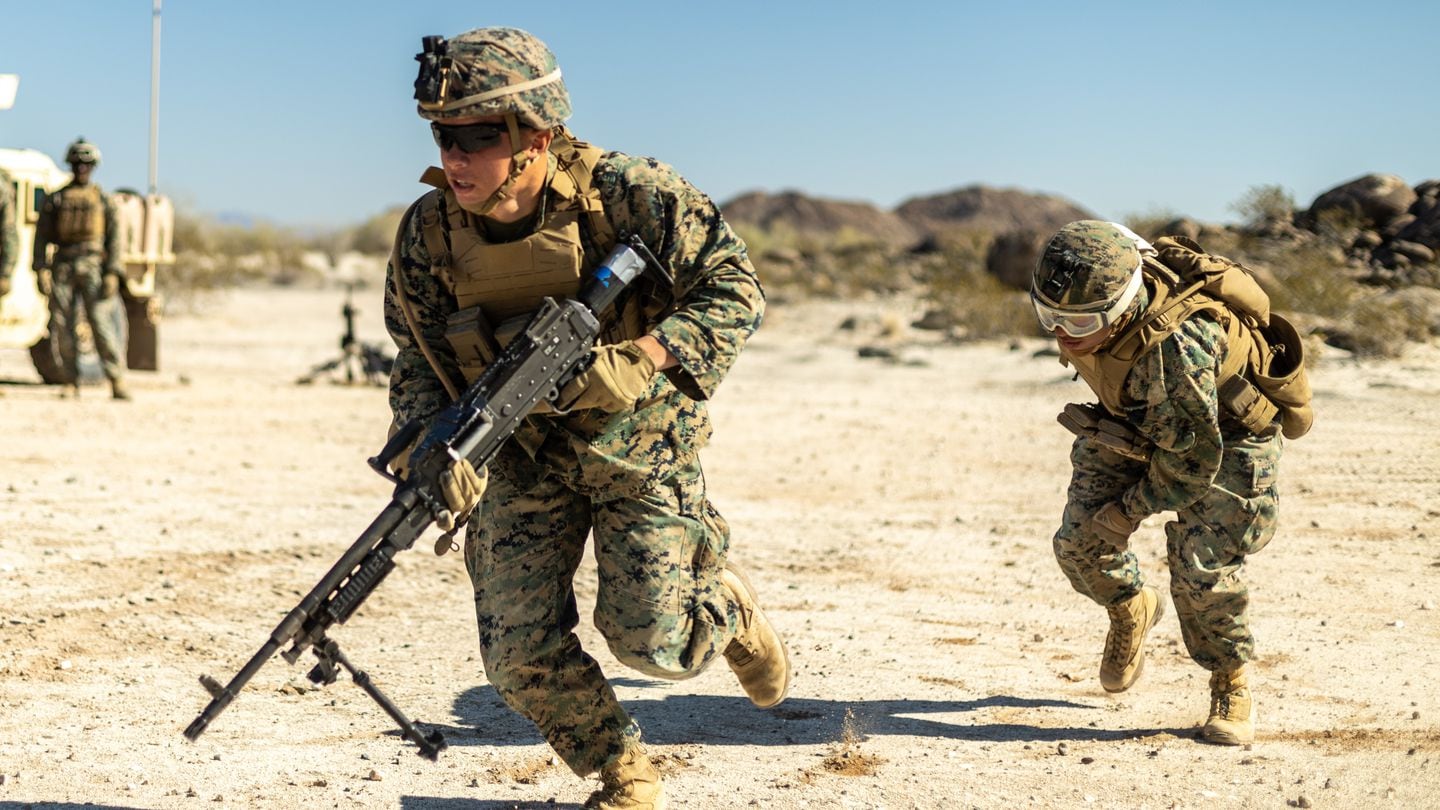
In China’s backyard: The new Marine regiments changing the fight
Here's what you need to know about the Corps’ newest regiment: the Marine littoral regiment.
It started in 2016, when then-Lt. Gen. David Berger looked at Marine units in the Pacific and saw that without radical changes, the Corps would be sidelined, or worse, in the most likely next fight.
As commander of Marine Forces Pacific, he’d seen wargames showing the Marine Corps battle its potentially biggest foe: China.
The service was set up to deliver two brigades’ worth of infantry and combined arms to a land fight that looked a lot more like the Korean War than what they would face in what experts envision as a 21st century, high-tech, long-range striking conflict.
Could the Corps keep up?
It was the start of the future commandant’s Force Design transformation plan — and the birth of the Marine littoral regiment.
To win against China, he’s said, Marine units would need to be trained and equipped to operate in variety of sized units. They’d need to be able venture across wide distances, with a focus on the littoral zone, where land and sea meet.
As the Marine Corps has worked through its transformation known as Force Design in recent years, officials have restructured the infantry battalion, shed legacy equipment such as tanks and reduced artillery.
New in 2024: Marines build 3rd Littoral Regiment to fight peer threats
The Corps has added drones, anti-aircraft equipment and is developing a ship-sinking missile.
All of this is to position the service to do what its top leaders think will be the most pressing future challenge: support the Navy and the joint force countering China in the Pacific.
The Corps’ newest regiment, the Marine littoral regiment, combines new drone and sensing tech, anti-aircraft equipment and a ship-sinking missile into one formation — purpose-built to move around the land and sea, hopefully going unnoticed so that it can strike when needed, allowing Navy ships to roam freely while thwarting the Chinese military’s access to key terrain and maritime choke points.
Two regiments have stood up since the new formation concept was announced in 2020 — the 3rd Marine Littoral Regiment based in Hawaii, formerly the
3rd Marine Regiment infantry unit, and in late 2023 the 12th Marine Littoral Regiment based in Okinawa, Japan, formerly 12th Marine Regiment artillery unit.
A third, and final, Marine littoral regiment is planned to launch in 2027, based out of Guam and using a rotational force, rather than a permanently stationed unit for its manpower.
The regiments are about the size of a Marine expeditionary unit, with about 2,100 Marines and sailors — smaller than a standard infantry regiment, which contains 3,000 or more Marines.
Commandant Gen. Eric Smith has stressed that the Marine littoral regiment is still a version of the Marine air-ground task force, the construct used to build nearly all Marine formations from the Marine expeditionary unit to the Marine expeditionary brigade and Marine expeditionary force.
“It’s just sized and purpose-built for its task, which is to be light, lethal and austere and to be able to stand in the weapons engagement zone when others are going to have to leave because of the threat,” he told War on the Rocks in 2023.
“They are exactly what we need in the Pacific,” Smith said. “It is the best solution to the task we’ve been given.”
And that task is to enable the Navy to fight the naval fight.
What that’s meant for 3rd Marine Littoral Regiment and will mean for 12th Marine Littoral Regiment and the subsequent regiment in Guam as they build manpower and capabilities, is fewer Marines, new equipment, novel approaches to getting to and staying in the fight, and a shift in focus from infantry to sensing and targeting.
Key differences
Lt. Col. Brandon Ward heads the Marine littoral regiment integration efforts at combat development and integration.
Past infantry and artillery units before the force design changes were organized for when the focus was more on operating on the Korean peninsula or being able to deploy two brigades worth of Marines if needed for a large-scale conflict.
But with China’s air defense systems and growing naval fleet, a Marine unit now needs to task organize and create “windows of opportunity” in those anti-access areas so the Navy and joint services can bring in their weapons or forces, he said.
This required moving away from infantry-heavy formations, with shorter-range conventional artillery and to longer-range systems such as the Navy-Marine Corps expeditionary ship interdiction system, or NMESIS.
The Navy-Marine Corps expeditionary ship interdiction system combines a joint light tactical vehicle with remote controls and mounts a Naval strike missile on the frame, giving users a mobile missile system in a single package.
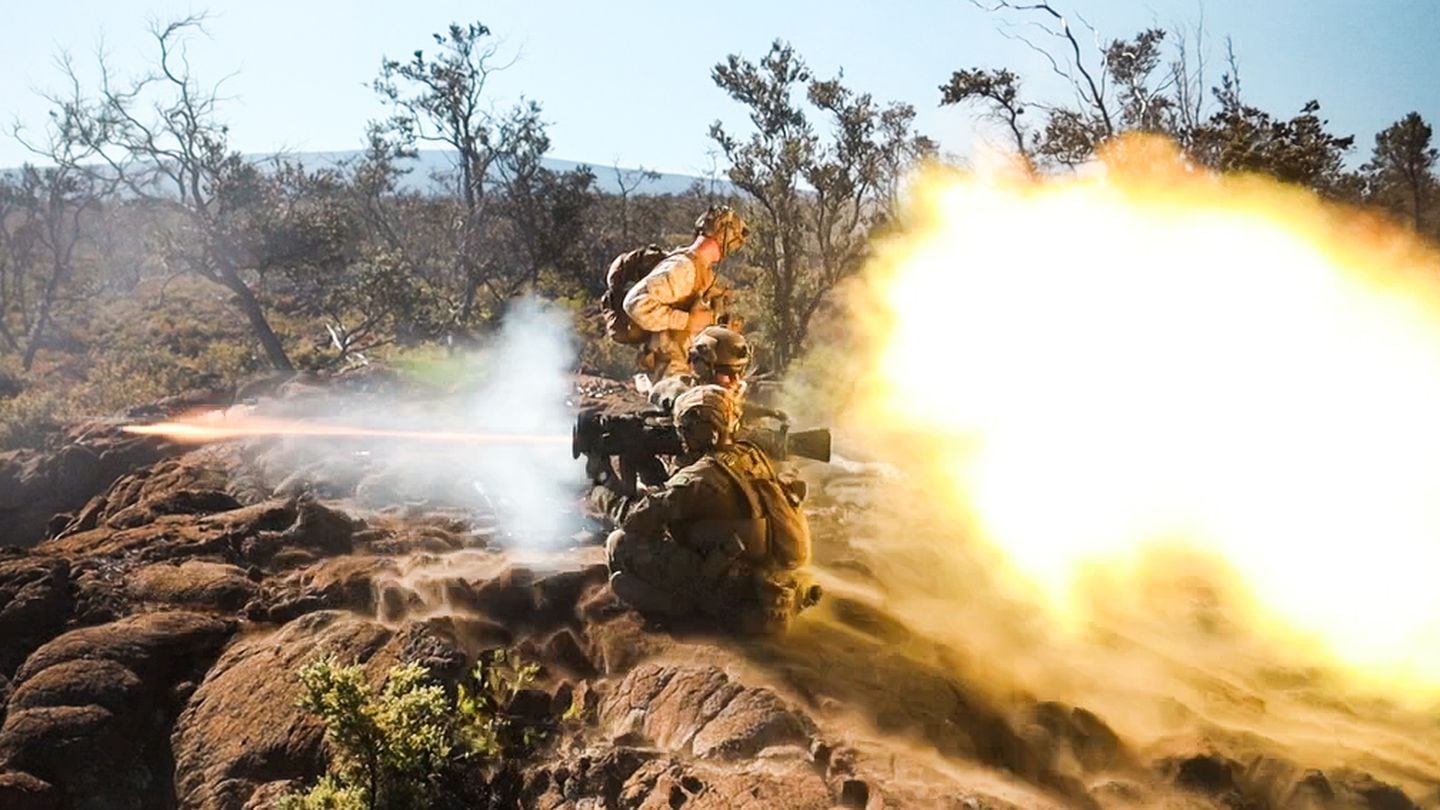
Members of 3rd Marine littoral regiment’s littoral combat team are doing new equipment training with the Navy-Marine Corps expeditionary ship interdiction system, with fielding expected in fiscal year 2025.
The regiment’s sensing capability is as important or more important than its missiles, said Col. John Lehane, 3rd Marine littoral regiment commander. Marine senior leaders have emphasized reconnaissance and counter-reconnaissance capabilities as a key Corps contribution.
“We’re giving to the (combatant) commander a low signature team with the ability to stand inside a weapons engagement zone and provide them information in a manner that is not risking an (Airborne Warning and Control System), a $1.6 billion destroyer or take your pick of high value asset that might be at risk when we can take that risk for you,” Lehane said.
To build a formation that could task organize from as small as a handful of Marines to an entire regiment, depending on the mission, required some structural overhauls.
A standard infantry regiment holds more than 3,000 Marines with a headquarters company, combat assault company and three infantry battalions, which include its own headquarters, weapons and rifle companies. The regiment is augmented by artillery and sometimes also task-organized for specific missions.
The Marine littoral regiment comprises three main elements — the littoral combat team, the littoral logistics battalion and the littoral anti-air battalion — all overseen by the regimental headquarters, which contains a headquarters and service company, communications company and a long-range unmanned surface vessel company. It has approximately 2,100 personnel.
Signaling the shift in needs, the headquarters communications company is three times the size of that of a standard infantry regiment with much more commercial communications technology, Lehane said.
This means Marines in the new littoral regiments will likely be senior in rank and be put in teams with Marines from other job fields more often. Smaller groups with mixes of infantry, communications, artillery and logistics running operations far from headquarters.
The regimental and battalion headquarters will push their experts in various areas down to those teams as they organize them for a individual missions.
The littoral combat team holds three infantry companies, a fire direction center section, engineer platoon and medium missile battery.
The littoral anti-air battalion focuses on the skies with an air control battery, sensor platoon ground based air defense and Marine air defense integrated system platoons to counter enemy surveillance, missile and drone strikes.
Having air domain awareness, air defense and advanced sensing wasn’t something the ground combat element of the Marine air-ground task force could do in the past, Lehane said.
The littoral logistics battalion has a variety of engineer, communications, supply, fuel and ordnance teams, platoons and sections.
Much like changes made in the recent infantry battalion experiments, which bumped ranks up by one to two echelons, such as making staff sergeant the standard rank for a squad leader, the regiment is doing the same.
Lehane said specifically Marines in the headquarters are several ranks higher with more experience and knowledge.
The combined structural, equipment and personnel changes gives the commander more options.
“That breeds a lot of flexibility in how we’re going to employ this unit,” Lehane said.
The road to here
Some of the early experimentation that started within 3rd Marines before it became 3rd Marine Littoral Regiment included the August 2021 military exercise Island Marauder in Hawaii. Marines set up in an early version of the littoral combat team worked with tactical tablets, target handoff systems and very small aperture terminal satellite capabilities.
By March 2022, the regiment had been redesignated as 3rd Marine Littoral Regiment and headed straight into the Balikatan military exercise in the Philippines, practicing littoral maneuver and communications drills.
But the unit’s first high-level accomplishment was during the Rim of the Pacific exercise in July 2022–August 2022 in Hawaii and southern California when it simulated its new mission.
The regiment scattered a handful of units ashore armed with the Navy-Marine Corps expeditionary ship interdiction system, sensors and fire direction and air control elements.
Those Marines were in place when a Navy carrier strike group approached the strait and called on the regiment’s team to knock out an enemy ship blocking their path.
In February 2023, the regiment conducted its first training exercise integrated into a larger Marine air-ground task force.
That took place across southern California with units dispersed, operating like they would in expeditionary advanced base operations, a key concept for future littoral combat.
The regiment set up a sensing node at Camp Pendleton, California, for airspace surveillance and control, a fires node at Camp Pendleton and another fires node at Marine Corps Logistics Base Barstow, California.
The regiment’s headquarters signals intelligence and electronic warfare section on San Clemente Island that used electromagnetic spectrum equipment to mask friendly forces from enemy detection.
Portions of 3rd Marine Division, including 3rd Marine Littoral Regiment, functioned as the stand-in force, defending terrain at Marine Corps Air Ground Combat Center, Twentynine Palms, California, from an assault force out of 7th Marine Regiment.
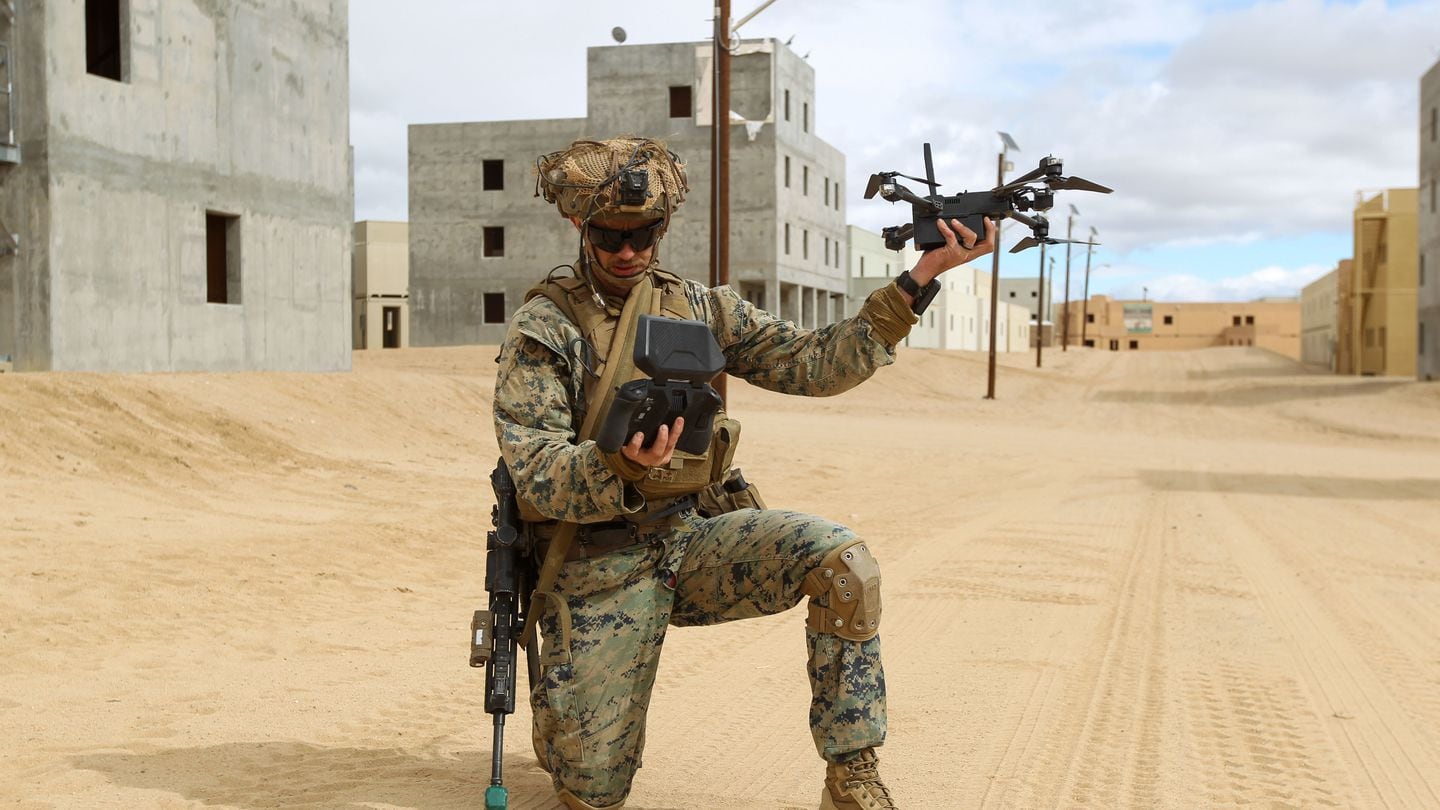
The regiment used its long-range precision fires, drone surveillance and short-range air defense to thwart the assault force, which captured none of its three objectives.
In November 2023, the regiment again operated as a stand-in force, this time alongside its partners from the Philippine Marine Corps 4th Marine Brigade and Coastal Defense Regiment and the Japanese Self Defense Force during exercise Kamandag 7 in the Philippines.
From late April to early May, the 3rd Marine Littoral Regiment conducted training in the Balikatan exercise, including three major combined operations where they seized an island seizure and then defended the coast with a littoral live fire and a counter-landing live fire to prevent the simulated enemy from reaching the shore.
Over the past three years the regiment has built its formation to focus on wedging small teams of Marines into critical areas to coordinate air defense and missile strikes.
Each of the exercises has worked through long-range communications and syncing tools such as electromagnetic warfare, sensing, masking, detection, allowing the teams to hit enemy ships and other targets.
Criticism and risk
Retired Marine Col. Mark Cancian, senior adviser at the Center for Strategic and International Studies, is cautiously optimistic about the Marine Corps’ new regiment, but said much still needs to be proven in the concept as the unit evolves.
“It’s arguably well designed, there are a lot of questions about getting it in place before conflict begins or keeping it resupplied after a conflict begins,” Cancian said.
Cancian ran a dayslong series of wargames at the Center for Strategic and International Studies in 2023 simulating a Chinese invasion of Taiwan. Resupplying units inside China’s weapons zone during the wargame was “a huge problem.”
The Corps is experimenting with long-range, autonomous submersibles to provide maritime resupply.
“That’s a huge risk when you’re inside the (weapons engagement zone) and when you’re operating in small units,” Cancian said.
The retired colonel said comments by Marine officials that troops will “live off the land” don’t add up.
“You can buy food, you might be able to buy fuel, you might be able to get trucks, but you can’t get what you really need and that is missiles,” Cancian said. “You can’t go down to the local store in the Philippines and get a Harpoon missile.”
Lehane acknowledged the challenges of sustaining forward-deployed units but said the regiment was purpose-built to be lighter and more capable than legacy formations in part to address those challenges.
Cancian likes the anti-ship missile development, “I think that is critically important in the naval campaign in the Western Pacific.”
Like with the rest of Force Design changes, the creation of the Marine littoral regiments has stirred debate and pushback, especially from a group of retired Marine officers, generals and key senior leaders.
Vocal critic retired Lt. Gen. Paul Van Riper, former commander of Marine Corps Combat Development Command, argues that the move to littoral regiments requires too many tradeoffs and sacrifices combined arms maneuverability.
Van Riper questions whether Marine littoral regiment units will be able to get into place before conflict begins and whether they’ll be able to hide from an adversary’s detection if they do.
“The (stand in force) concept assumes the Chinese will not be aware of their locations prior to a war starting, which is a stretch with the electronic and physical signatures these units will emit,” Van Riper said.
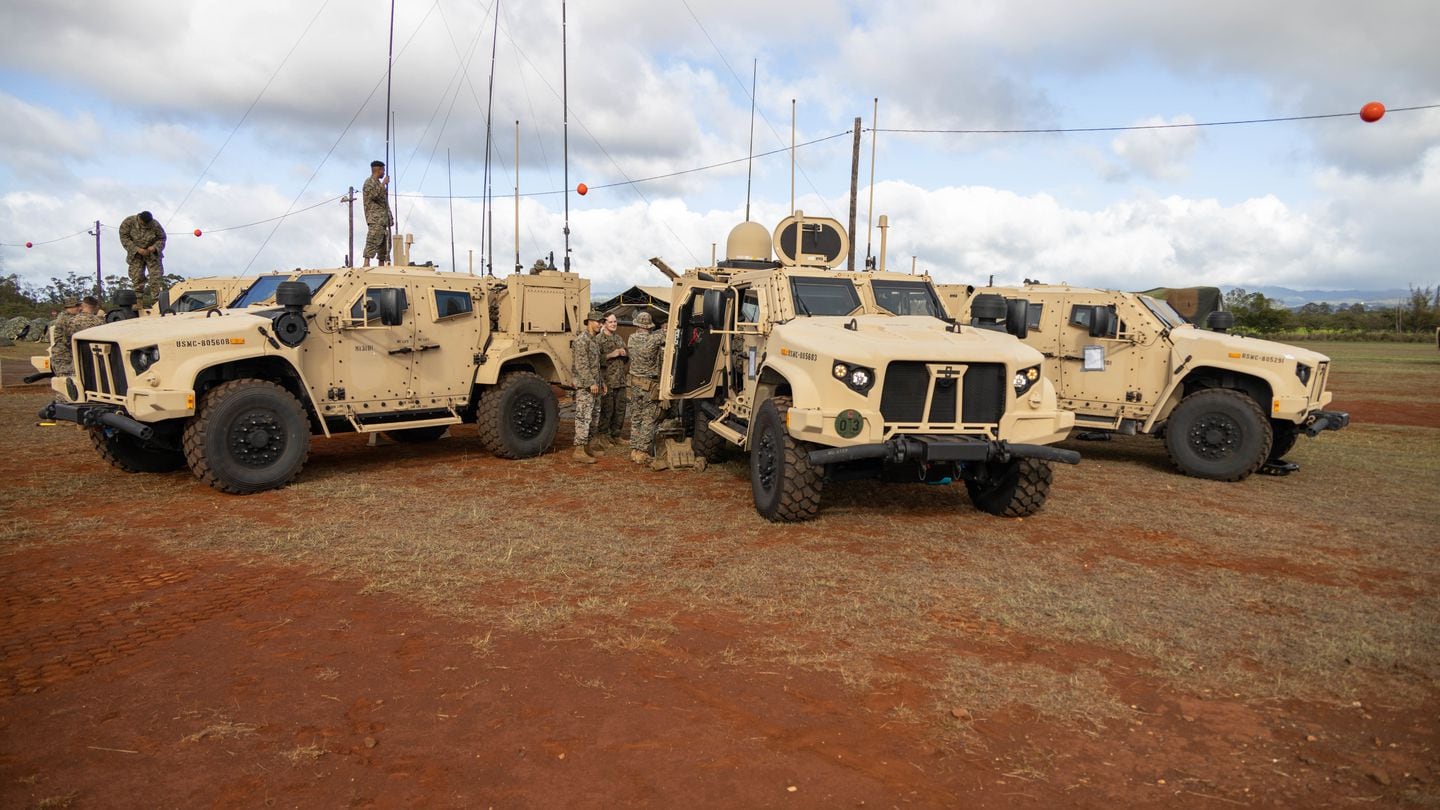
Col. Peter Eltringham, 12th Marine littoral regiment commander, told Marine Corps Times that the unit’s position on Okinawa, Japan, allows the unit to train regularly with the Japanese Self Defense Forces, all within the first island chain near China.
Having the unit there allows for it to be present in competition, pre-conflict, he said.
Lehane, the 3rd Marine littoral regiment commander, stressed work with partners and allies, such as the Philippines, as crucial to having access in the region ahead of conflict.
And once the Marines fire their missiles, Van Riper doubts they’ll be able to move fast enough to avoid a counterstrike, which could be mounted in minutes.
The Corps is experimenting with a landing ship medium program that would give Marines a low-profile, shore-to-shore connector. Plans call for a 200-foot to 400-foot long vessel with 8,000 square feet of cargo space.
Currently the service is using a 254-foot stern landing vessel, a modified commercial offshore supply watercraft, to test the concept.
Lehane said since its redesignation, the 3rd Marine littoral regiment has rehearsed moving Marines and equipment from the third island chain to the first island chain at a “moment’s notice.”
While they await fielding of the landing ship medium, the unit relies on Marine and joint force capabilities such as C-17s, Ospreys, C-30s, CH-47 aircraft and black-bottom shipping vessels, the Army’s logistic support vessels, and the Navy’s expeditionary fast transport vessels.
Van Riper also has concerns about the regiment’s capabilities when compared with its adversary’s.
The Chinese military has built an area defense network of ships, submarines, long-range aircraft and missile systems to strike targets to the first and second island chain, which covers Japan, all the Philippines and much of Indonesia out to an estimated 1,000 nautical miles from mainland China.
The littoral regiment’s Naval strike missile’s range is 120 nautical miles. The Army’s Multi-Domain Task Force uses the precision strike missile, with a range of nearly 250 miles, and it plans to field hypersonic missiles also.
Existing U.S. platforms such as Navy submarines, destroyers and Air Force aircraft have farther-reaching munitions and higher capacity than the regiment can provide, Van Riper said.
Lehane said the regiment and the Army task forces have complementary capabilities and coordinate closely. Some distinctions for the regiment included its organic air defense capabilities in the littoral anti-air battalion and the littoral combat team’s ability to seize and defend maritime terrain.
Putting the pieces together
Leading the main components of the regiment — the littoral combat team, littoral anti-air battalion and littoral logistics battalion — are three lieutenant colonels, each with their own experiences across a variety of traditional Marine units before joining the regiment.
Lt. Col. Mark Lenzi commands the littoral combat team, a modified infantry battalion with three infantry companies and one medium missile battery.
The team had a head start on the rest of the regiment as 1st Battalion, 3rd Marines, was one of the units used in phase I of the infantry battalion experiments. Those experiments adjusted the size, ranks and setup of the battalions.
Major changes included reducing the number of Marines and sailors from 965 total to 880 total, removing snipers and creating a scout platoon for those functions, adding signals intelligence and electronic warfare capabilities at the company level.
The biggest difference between the legacy battalion and the littoral combat team is the missile battery, which is organic to the unit. In a typical rotation, artillery would be added to the battalion landing team once it began deployment work.
And the role of both the infantry and battery has changed.
In a traditional scenario, the battery would fire in support of the infantry’s mission, Lenzi said. But with the littoral combat team the battery provides fires to support regimental priorities and higher headquarters missions. The infantry helps establish and protect the battery.
Lt. Col. Osman Sesay commands the littoral logistics battalion, which is nested within the regiment, rather than being separated in a logistics group, supporting a division, as is the more routine way of organizing the unit.
Having senior logisticians within the formation, and logistics Marines embedded within each task-organized unit on operations, speeds up accessing and delivering supplies, Sesay said.
Lt. Col. James Arnold commands the littoral anti-air battalion, which contains an air control battery and a ground-based air defense battery.
As with missiles and logistics, the air control and defense capabilities might typically be seen at the higher commands but not within the regiment or battalions, Arnold said.
“Having those organic in the regiment provides significant advantage in making sense of the battlespace and synchronizing fires both organic and non-organic, which would otherwise require (Marine Expeditionary Force) capabilities,” Arnold said.
All three commanders noted that the structural changes allow for the Marines of varied skill sets to work more closely with each other on a more regular basis. That helps with understanding processes, communicating and tackling tasks quickly.
Though the unit is formed, Marines continue to tinker with concepts and employment. Lenzi said the littoral combat team is pairing scouts with group 2 drones, which may provide a reconnaissance approach different from what’s traditionally done in an infantry battalion.
Logistics teams are working on autonomous supply delivery systems and pulling resources from the local area in austere sites.
And the littoral anti-air battalion has worked through rapid deployment of its assets on C-17s so it could provide airspace surveillance as part of bilateral training with Filipino counterparts in an aviation-centric exercise in 2023.
The Corps has bet big on the littoral regiment. It will ultimately reconfigure three full regiments in the Pacific tailored to get the Navy in place for a shooting war with China.
As the service builds these units and trains alongside other nations, each new exercise tests the concept at the heart of the Marines’ yearslong and ongoing transformation. How the regiments perform will signal the effectiveness of force design.
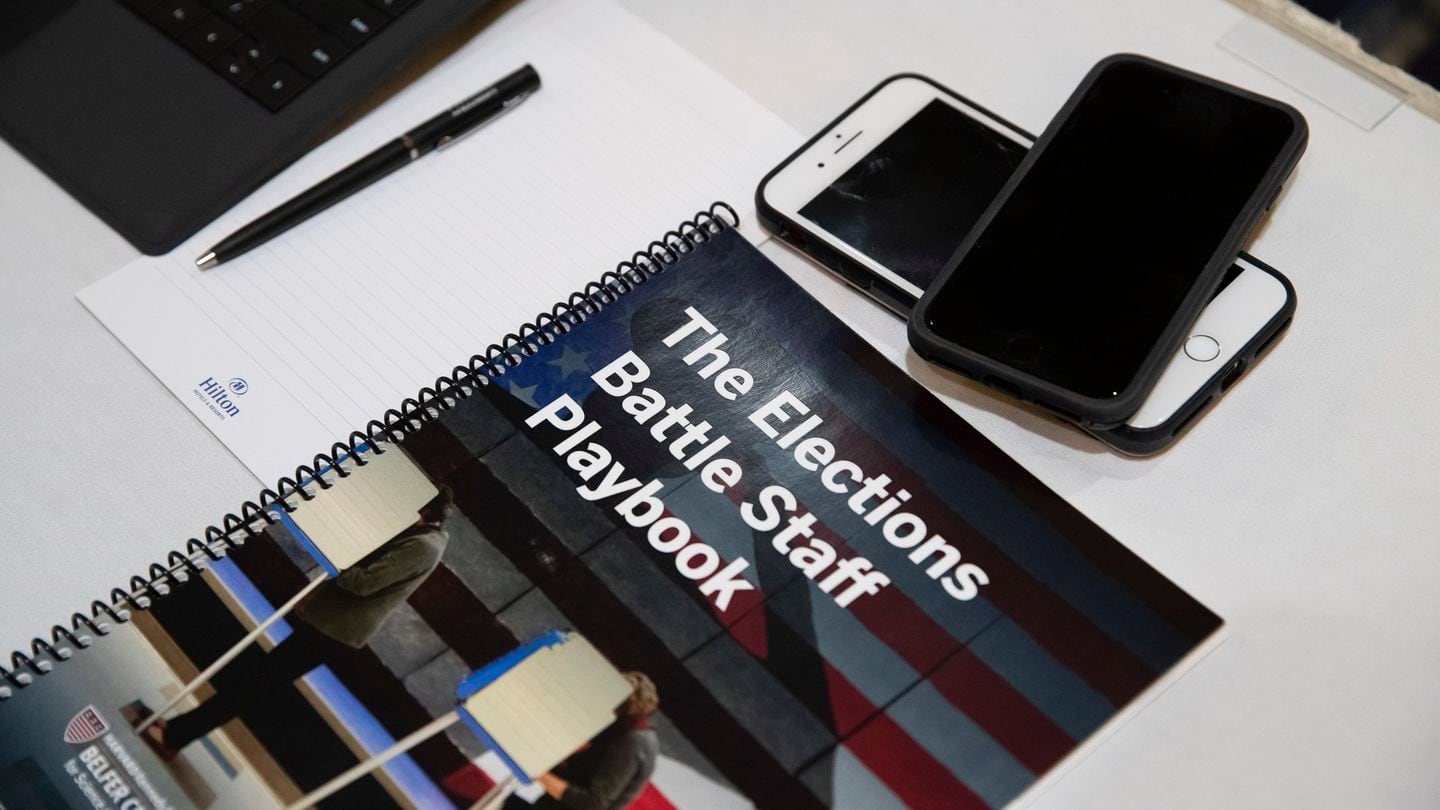
Disinformation creates ‘precarious year for democracy,’ experts warn
Some of the messaging meant to sow division is reaching veterans and service members by preying on their sense of duty to the U.S.
As wildfires swept across Maui in 2023, killing more than 100 people and causing widespread destruction, another damaging force was spreading online.
Chinese actors exploited the unfolding chaos and took to social media, where they shared a conspiracy that the fire was the result of a “meteorological weapon” being tested by the U.S. Department of Defense. According to new analysis from Microsoft Corporation, a worldwide technology company, the Chinese accounts posted photos that were created with generative artificial intelligence, which uses new technology that can create images from written prompts.
The situation exemplifies two challenges that some experts are warning about ahead of the presidential election in November: The use of generative AI to create fake images and videos, and the emergence of China as an adversary that stands ready and willing to target the United States with disinformation. Academics are also voicing concerns about a proliferation of alternative news platforms, government inaction on the spread of disinformation, worsening social media moderation and increased instances of public figures inciting violence.
An environment rife for disinformation is coinciding with a year during which more than 50 countries are holding high-stakes elections. Simply put, it’s a “very precarious year for democracy,” warned Mollie Saltskog, a research fellow at The Soufan Center, a nonprofit that analyzes global security challenges. Some of the messaging meant to sow division is reaching veterans by preying on their sense of duty to the U.S., some experts warned.
“Conspiracy theories are a threat to vulnerable veterans, and they could drag your loved ones into really dark and dangerous places,” said Jacob Ware, a research fellow at the Council on Foreign Relations who published a book this year about domestic terrorism.
“The seeds are there for this kind of activity again, and we need to make the argument that protecting people from conspiracy theories is in their best interest, not just in the country’s.”
The threat of state-backed disinformation
China kept to the sidelines during the 2016 and 2020 presidential elections, watching as Russia targeted the U.S. with chaos-inducing disinformation, according to the U.S. Intelligence community. But Beijing’s disinformation capabilities have increased in recent years, and the country has proven a willingness to get involved, Saltskog said.
In a report published in April, Microsoft warned that China was preparing to sow division during the presidential campaign by using fake social media accounts to discover what issues divide Americans most.
The accounts claimed that a train derailment in Kentucky was deliberately caused by the U.S. government, and they polled Americans about issues like climate change, border policies and racial tensions. China uses the information gathered to “understand better which U.S. voter demographic supports what issue or position and which topics are the most divisive, ahead of the main phase of the U.S. presidential election,” the technology behemoth warned.

“The primary concern today, in our assessment, is Russia, China and Iran, in that order,” Saltskog said. “Specifically, when we talk about China … we’ve seen with the Hawaii wildfire example that they have AI-powered capabilities to produce disinformation campaigns targeting the U.S. It’s certainly very concerning.”
Envoys from China and the U.S. are set to meet this week to discuss the risks of artificial intelligence and how the countries could manage the technology. A senior official in President Joe Biden’s administration told reporters Friday that the agenda does not include election interference, but noted the topic might come up in discussion.
“In previous engagements, we have expressed clear concerns and warnings about any [Peoples Republic of China] activity in this space,” a senior administration official said. “If the conversation goes in a particular direction, then we will certainly continue to express those concerns and warnings about activity in that space.”
Logically, a British tech company that uses artificial intelligence to monitor disinformation around the world, has been tracking Russian-sponsored disinformation for years. Kyle Walter, the company’s head of research, believes Russia is positioned to increase its spread of falsehoods during the run-up to the November election, likely focusing on divisive issues, such as immigration and the U.S. economy.
Russia isn’t seeking to help one candidate over another, Walter added. Rather, it’s trying to sow chaos and encourage Americans to question the validity and integrity of their voting process.
Microsoft’s threat analysis center published another report at the end of April, saying that Russian influence operations to target the November election have already begun. The propaganda and disinformation campaigns are starting at a slower tempo than in 2016 and 2020, but they’re more centralized under the Russian Presidential Administration than in the past, Microsoft officials said.
So far, Russia-affiliated accounts have been focusing on undermining U.S. support for Ukraine, pushing disinformation meant to portray Ukrainian President Volodymyr Zelensky as unethical and incompetent, and arguing that any American aid to Ukraine was directly supporting a corrupt and conspiratorial regime, the report states.

State-backed disinformation campaigns like these have used images of U.S. service members and targeted troops and veterans during the previous two presidential elections.
A study from Oxford University in 2017 found Russian operatives disseminated “junk news” to veterans and service members during the 2016 election. In 2020, Vietnam Veterans of America warned that foreign adversaries were aiming disinformation at veterans and service members at a massive scale, posing a national security threat.
“It’s certainly happened historically, and it’s certainly a threat to be aware of now,” Saltskog said.
A social media ‘hellscape’
In March, the pause in public sightings of Kate Middleton, along with the lack of updates regarding her health following abdominal surgery, created a breeding ground for conspiracy theories.
Scores of memes and rumors spread in an online fervor until Middleton posted a video March 20, in which the Princess of Wales shared the news that she had been diagnosed with an undisclosed type of cancer. Some who shared conspiracies responded with regret.
The situation offered a public example of how conspiracy thinking snowballs on social media platforms, as well as the real harm it can cause, said AJ Bauer, an assistant professor at the University of Alabama, where he studies partisan media and political communications.
“It does reinforce the fact that social media gives us an opportunity to crowdsource and spin conspiracy theories and conspiracy thinking,” Bauer said. “It can be done for a kind of whimsy, or it can be done for harm, and the line between whimsy and harm is a fine one. It can tip from one to the other pretty quickly.”
Social media platforms were blamed during the presidential election seasons in 2016 and 2020 for the influential campaigns that gained traction on their sites. Since then, the situation has only worsened, several experts argued.
What are disinformation and extremism? And why should troops be aware?
Bauer specifically blamed recent changes at X, formerly Twitter, which was taken over in 2022 by billionaire Elon Musk.
Musk has used the platform to endorse at least one antisemitic conspiracy theory, and several large corporations withdrew from the platform after their ads were displayed alongside pro-Nazi content. Bauer described the site as a “hellscape” that is “objectively worse than it was in 2020 and 2016.”
“One really stark difference is that in 2020, you had a lot of big social media platforms like Twitter and Meta trying at least to mitigate disinformation and extremist views because they got a lot of blame for the chaos around the 2016 election,” Bauer said. “Part of what you see going into this election is that those guardrails are down, and we’re going to experience a free-for-all.”
In addition to the changes at X, layoffs last year struck content-moderation teams at Meta, Amazon, and Alphabet (the owner of YouTube), and have led to fears that the platforms would not be able to curb online abuse or remove deceptive disinformation.
“That timing could not be worse,” Saltskog said. “We’re going to have a much thinner bench when it comes to the people inside social media platforms who do this.”
Kurt Braddock, an assistant professor at American University who studies extremist propaganda, argued that social media platforms don’t have financial incentive to moderate divisive or misleading content.
“Their profits are driven by engagement, and engagement is often driven by outrage,” Braddock said.
Because of this, Braddock believes there should be more focus placed on teaching people — especially younger people — how to spot disinformation online.
A study last year by the Center for Countering Digital Hate found that teenagers were more likely than U.S. adults to believe conspiracy theories. Another study by the University of Cambridge found that people ages 18 to 29 were worse than older adults at identifying false headlines, and the more time people spent online recreationally, the less likely they were able to spot misinformation.
The average age of the active-duty military is 28.5, according to a Defense Department demographic profile published in 2023, and new recruits are typically in their early 20s. Because of the young age of the force, Braddock thinks the Defense Department should be involved in teaching news literacy.
The Pentagon and Department of Veterans Affairs did not respond to a request for comment about any efforts to help service members and veterans distinguish accurate information online.
“They’ve grown up in the digital age, and for some it’s been impossible to differentiate what’s real and what’s not real,” Braddock said. “They’ve essentially been thrown to the wolves and don’t have the education to be able to distinguish the two. I think there needs to be a larger effort toward widespread media literacy for young people, especially in populations like the military.”

AI speeds disinformation
Overall, people are getting better at spotting disinformation because of awareness efforts over the past several years, Braddock believes.
However, just as more people were becoming accustomed to identifying false information, the landscape changed, he said. Generative AI gained traction last year, prompting the launch of tools that can create new images and videos, called deepfakes, from written descriptions.
Since Hamas launched a surprise attack on Israel on October 7, these digital tools have been used to create propaganda about the ensuing conflict. Some AI images portray injured or frightened Palestinian children running from air strikes in Gaza, while others depict crowds of people waving Israeli flags and cheering for the Israeli Defense Forces.
“This is a new thing, and most people aren’t prepared to differentiate between what’s real and what’s not,” Braddock said. “We need to stay on top of these different technologies which can be used to reach a large amount of people with propaganda. It only takes one person to do a lot of damage.”
The Soufan Center and Council on Foreign Relations consider AI to be the top concern heading into November. The technology is developing faster than Congress can work to regulate it, and social media companies are likely to struggle to moderate AI-generated content leading up to the election, Ware said.
As Congress grapples with reining in AI, some states are taking the lead and scrambling to pass legislation of their own. New Mexico is the latest to pass a law that will require political campaigns to provide a clear disclaimer when they use AI in their advertisements. California, Texas, Washington, Minnesota and Michigan have passed similar laws.
Ware said that among those working to counter domestic terrorism, AI has been treated like “a can getting kicked down the road” — a known problem that’s been put off repeatedly.
“We knew it was a specter that was out there that would one day really affect this space,” Ware said. “It’s arrived, and we’ve all been caught unprepared.”

The technology can accelerate the speed and scale at which people can spread conspiracy theories that radicalize others into extremist beliefs, Ware added. At The Soufan Center, researchers have found that generative AI can produce high quantities of false content, which the center warned could have “significant offline implications” if it’s used to call for violent action.
“You can create more false information at scale. You can just ask an AI-powered language model, ‘Hey, create X number of false narratives about this topic,’ and it will generate it for you,” Saltskog said. “Just the speed and scale and efficacy of it is very, deeply concerning to us experts working in this field.”
The creation of AI images and videos is even more concerning because people tend to believe what they can see, Saltskog said. She suggested people look at images and videos carefully for telltale signs of digital deception.
The technology is still developing, and it’s not perfect, she said. Some signs of deepfakes could be hands that have too many or too few fingers, blurry spots, the foreground melding into the background and speech not aligning with how the subject’s mouth is moving.
“These are things the human brain catches onto. You’re aware of it and attune to it,” Saltskog said. “Your brain will say, ‘Something is off with this video.’”
As Congress and social media platforms lag to regulate AI and moderate disinformation, Americans have been left to figure it out for themselves, Ware argued. Bauer suggested people do their homework about their source of news, which includes determining who published it, when it was published and what agenda the publisher might have. Saltskog advised people to be wary of anything that elicits a strong emotion because that’s the goal of those pushing propaganda.
Similarly, Ware recommended that if social media users see something that seems unbelievable, it likely is. He suggested they look for other sources providing that same information to help determine if it’s true.
“People are going to take it upon themselves to figure this out, and it’s going to be through digital literacy and having faith in your fellow Americans,” Ware said. “The stories that are trying to anger you or divide you are probably doing so with an angle, as opposed to a pursuit of the truth.”
This story was produced in partnership with Military Veterans in Journalism. Please send tips to [email protected].
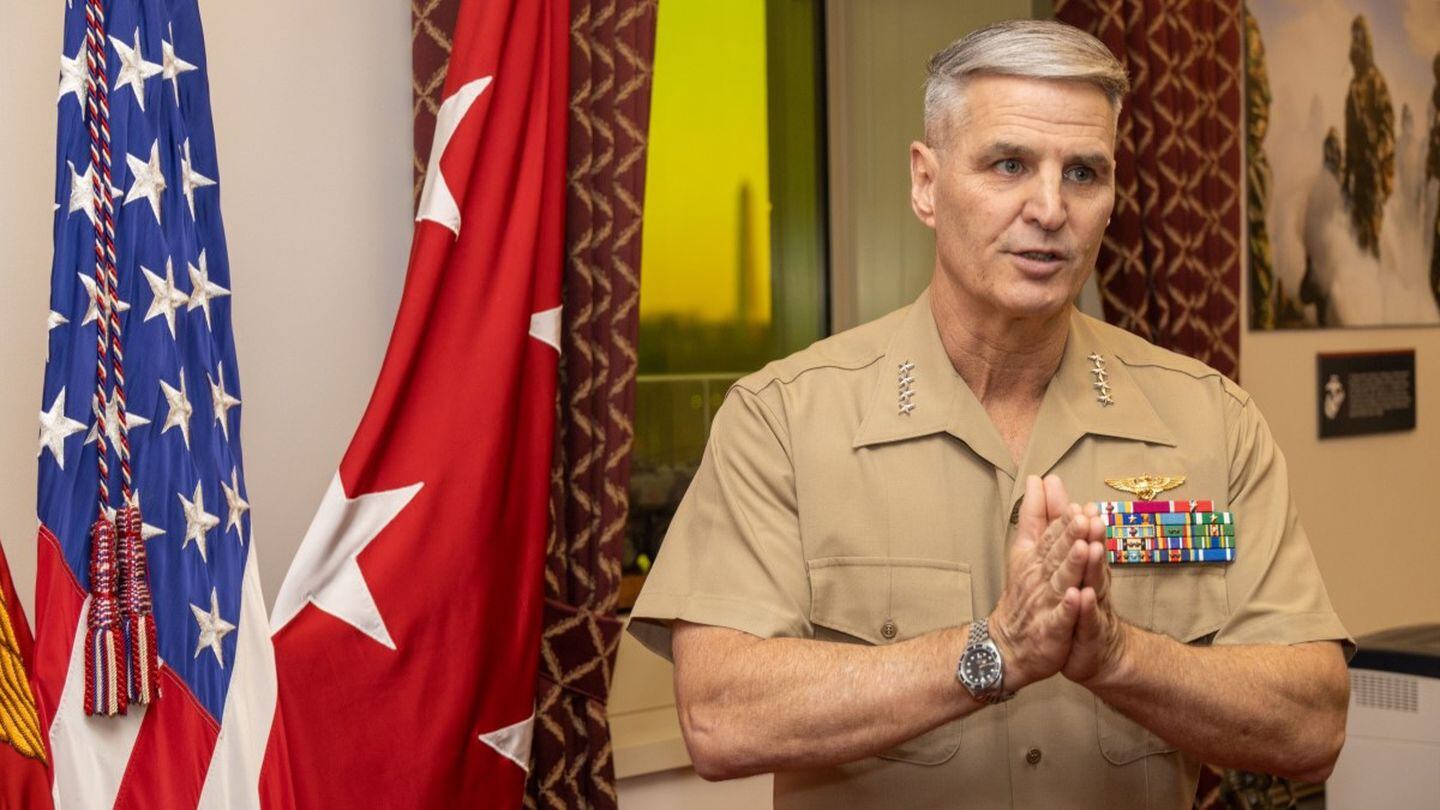
No. 2 Marine, a pilot, insists on continued primacy of infantry
The second-in-command of the Marine Corps is a pilot. But he still sees ground combat as the core of the Corps.
ARLINGTON, Virginia — The second-in-command of the Marine Corps is a pilot. But he still sees ground combat as the core of the Corps.
“I have to say, I am not from your tribe — I’m from a different tribe,” Assistant Commandant Gen. Christopher Mahoney told a crowd that included dozens of Marine grunts at the Marine Corps Association’s Ground Awards Dinner on Thursday in Arlington, Virginia. “I grew up in a tribe that had one purpose, and that was to support your tribe.”
“There is no other excuse for my tribe,” he continued. “There never has been.”
In a service that prides itself on its tough infantry, most top leaders have themselves been career infantry officers. Now-retired Gen. James Amos, the Corps’ first aviator commandant, was unpopular among some Marines who bristled at being led by a general from outside the infantry community.
Mahoney — who served as acting commandant for four months while Commandant Gen. Eric Smith (an infantry officer) recovered from a cardiac arrest — is another aviator. He has amassed more than 5,000 hours of flight time in the A-6, F-5, F-18 and F-35, according to his official bio.
But he also is a graduate of the infantry officer course. And, on Thursday, he had some fiery words of praise for the Marines who train to fight on land.
“You, as the ground combat element, are the purveyors of constitutional violence,” Mahoney said. “You are the righteous destroyers. If 2,500 years of military history points us in a direction, you are the deciders. You are the finishers.”
Corps leaders have said the war in Ukraine demonstrates Marines should be prepared to knock out ships with long-range fires, surveil adversaries in all domains and work to avoid detection themselves. Although Mahoney reiterated those points on Thursday, he also pointed out that the bloody, protracted fighting in Ukraine has taken place primarily on the ground.
Marine 3-star ‘myth-busts’ notions about Force Design 2030
At the same event, Mahoney honored the winners of the Corps’ best squad competition: 1st Squad, 1st Platoon, Charlie Company, 3rd Littoral Combat Team, 3rd Marine Littoral Regiment.
Mahoney gave each Marine in the squad, and one Navy corpsman, a handshake and a hearty punch on the arm. Then the general posed for a group photo with the young infantrymen.
He positioned himself at the very edge of the group.
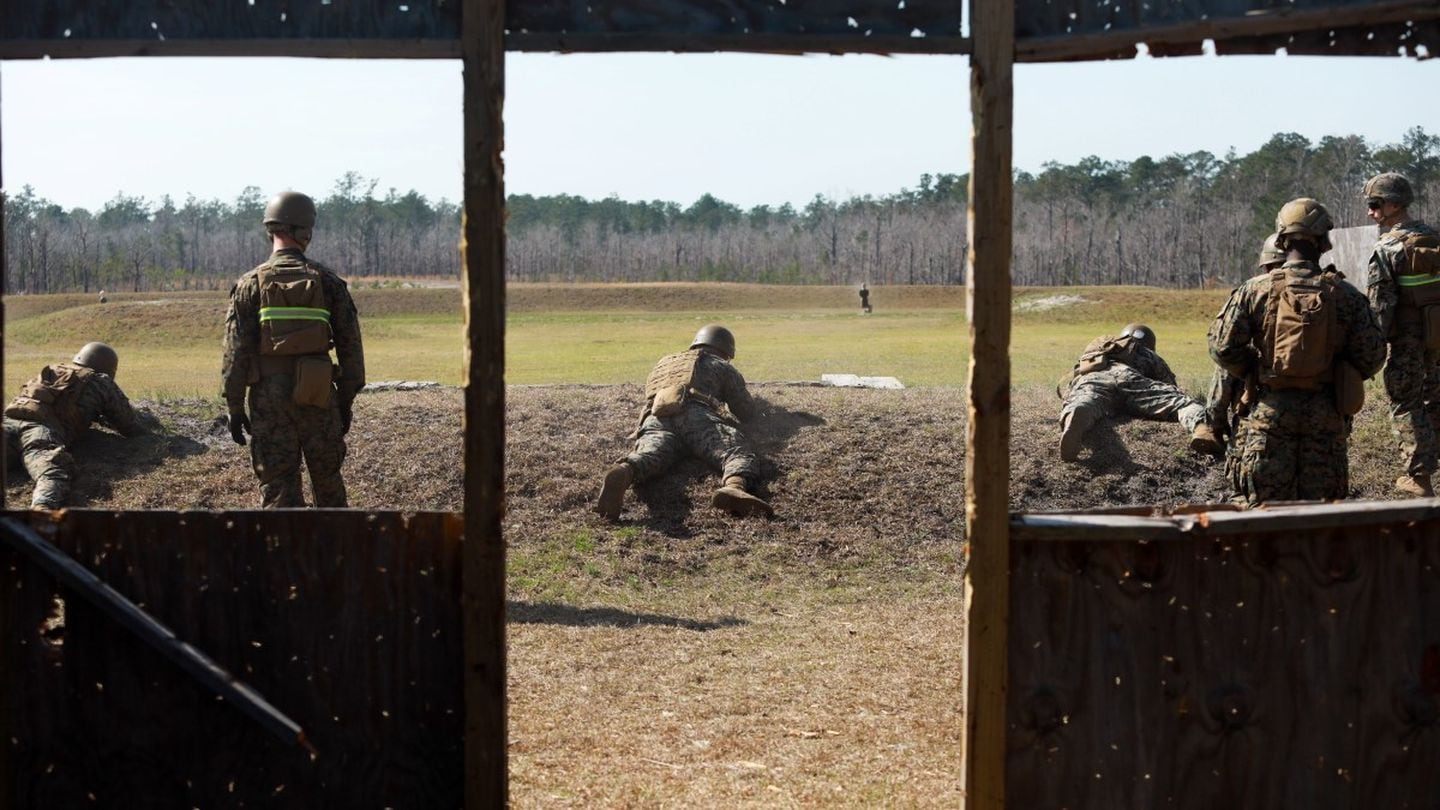
Marine combat instructors can avoid recruiting or drill instructor duty
The Marine Corps has made the combat instructor job a special duty assignment once more.
The Marine Corps has made the combat instructor job a special duty assignment once more, effectively allowing those instructors to sidestep the sometimes-dreaded recruiter or drill instructor jobs.
Each year, a portion of Marine noncommissioned officers are given special duty assignments, which take them out of their regular jobs for a few years to perform other duties on behalf of the Corps. Now, the combat instructor job, which entails training Marines in combat skills, counts as a special duty assignment.
“It’s an extremely rewarding duty because you actually get to affect and to teach the warfighting skills that all Marines learn through the entry-level training pipeline, and it’s really critical for the operational readiness of the force,” Gunnery Sgt. Tyler Stokes, the enlisted assignments monitor for the combat instructor community, said in a video the Marine Corps recently posted to LinkedIn.
Marines get plucked from their regular jobs and placed into special duty assignments through the annual Headquarters Marine Corps Special Duty Assignment Screening Team screening process, often called HSST for short.
The Marine Corps itself said in an administrative message in 2023, “A successful SDA tour is a hallmark of a competitive Marine and makes him or her exceptionally qualified for promotion.”
The other special duty assignments are recruiter, drill instructor and Marine security guard detachment commander. Before a rule change that was announced in 2017, combat instructor and Marine security guard watchstander also counted as special duty assignments.
After that change, those two jobs became Type 1 screenable billets, a category that also includes Marine Corps security forces guards, staff noncommissioned officer academy faculty advisors and curriculum developers, and Marine special operators, among others, according to Marine spokeswoman Capt. Sarah Eason.
“Designation as a Special Duty Assignment increases the staffing priority of this duty, ensuring maximum fill of available billets,” Eason said of the recent redesignation of the combat instructor role via email May 3.
A 2019 analysis by the Marine Corps of the impact of special duty assignments — which at the time didn’t include combat instructor — on Marines’ lives found they were correlated with better promotion chances but also with higher rates of divorce, addiction and suicide attempts.
“Due to increased responsibilities and duties outside of one’s normal occupational field, SDA tours are often viewed as a Marine’s most stressful noncombat tour,” the analysis stated.
Now that being a combat instructor is a special duty assignment again, Marines who complete that role won’t end up on future HSST lists, according to Eason.
For the next special duty assignment season, fiscal year 2026, combat instructor may be an option for Marines who end up on the list “but will be subject to availability after the volunteer period,” Eason said.
“Unlike other SDAs, there are a limited number of Combat Instructor billets open to any primary military occupational specialty, and these routinely fill with volunteers,” the spokeswoman added. “The preponderance of Combat Instructor billets requires an infantry primary (military occupational specialty), so Marines in this field will likely be able to request Combat Instructor duty during the HSST.”
As a special duty assignment, the combat instructor role will come with incentives that include easier promotions and choice over a next duty station, according to Eason. Combat instructors will continue to receive special pay.
A plan to make the combat instructor job a special duty assignment again has been in the works since at least 2021, as the Corps planned to lengthen the infantry course from nine to 14 weeks, creating a demand for more instructors. Training Command did not respond by time of publication to a Marine Corps Times question about the current length of the course.

Hyundai subsidiary reaches settlement over troops’ repossessed cars
Hyundai’s financing subsidiary agreed to pay $333,941 in a lawsuit involving active duty service members whose cars they repossessed.
Hyundai Capital America reached a settlement with service members who alleged in a federal case that the company illegally repossessed their cars while they were actively serving.
The United States argued that the retrieval of service members’ property without a court order violated the Servicemembers Civil Relief Act, according to court documents.
The SCRA is a federal law that specifically prohibits an auto finance or leasing company from seizing an active service member’s motor vehicle without a court order. The service member only has to have made one payment on the vehicle in question before joining the military to qualify for protection under the SCRA.
The SCRA covers active duty members of the Army, Marine Corps, Navy, Air Force, Coast Guard, and members of the Reserve who are on active duty orders, according to the Consumer Financial Protection Bureau. It also covers members of the National Guard who are mobilized under federal orders for more than 30 consecutive days.
Hyundai Capital America is a subsidiary of Hyundai Motor America and Kia America that offers vehicle financing.
Navy Airman Jessica Johnson’s Hyundai Elantra was repossessed by Hyundai’s recovery department around July 30, 2017, according to court documents. She purchased the car in 2014 and enlisted in the Navy 9 months later.
She gave Hyundai Capital America her enlistment orders and requested SCRA benefits, specifically highlighting that her car could not be repossessed while she was deployed.
However, while she was deployed, her account became delinquent.
Johnson says she informed a Hyundai representative in 2017 that she was no longer deployed but still in the military. Shortly thereafter, the employee she spoke to recommended to the recovery department that her car be repossessed, even though the employee included documentation in the formal recommendation that showed Johnson was still on active duty.
Johnson’s car was repossessed soon after, according to court documents. She called Hyundai and left a message explaining that she was still on active duty and should be protected by the SCRA. Hyundai sold her vehicle 3 months later.
The lawsuit claimed that 26 service members’ motor vehicles were repossessed from 2015-2023 in ways that violated the SCRA.
If a service member is unable to attend court proceedings due to their military obligation, the auto finance company has to hold off on repossessing the vehicle, according to Sean Timmons, who practices military law as a managing partner at the Tully Rinckey Law Firm in Texas.
“If you’re a civilian working at McDonald’s and you don’t pay, that’s different,” said Timmons.
Beth Kubala, executive director of the Betty and Michael D. Wohl Veterans Legal Clinic at Syracuse University in New York, explained that any suggestion that the SCRA only protects a service member who is deployed defeats the purpose of the law. Kubala is also a retired lieutenant colonel and JAG officer.
“Think about a service member who does move frequently, who might be ordered for an unexpected month or a year of training or who might be unexpectedly put on orders to deploy,” said Kubala.
A press release from The Department of Justice said the payout will include $10,000 plus “any lost equity” to each service member whose vehicle was repossessed and $74,941 to the government. The settlement also requires Hyundai to train its employees on SCRA benefits.
The Department of Justice claims it has won over $481 million for more than 147,000 service members whose SCRA benefits were violated.
“Members of our Armed Forces should not have to worry about having their cars repossessed while they are in military service,” said Assistant Attorney General Kristen Clarke of the Justice Department’s Civil Rights Division, according to the press release.
Hyundai Capital America acknowledged the lawsuit in an emailed statement.
“We have entered into a settlement with the Department of Justice — which specifically does not entail our admission of any fault or wrongdoing,” said Angela Nicolaou, Hyundai Capital America’s manager of brand communication.
She said the company took pride in supporting military service members and is committed to providing “best-in-class” customer service.
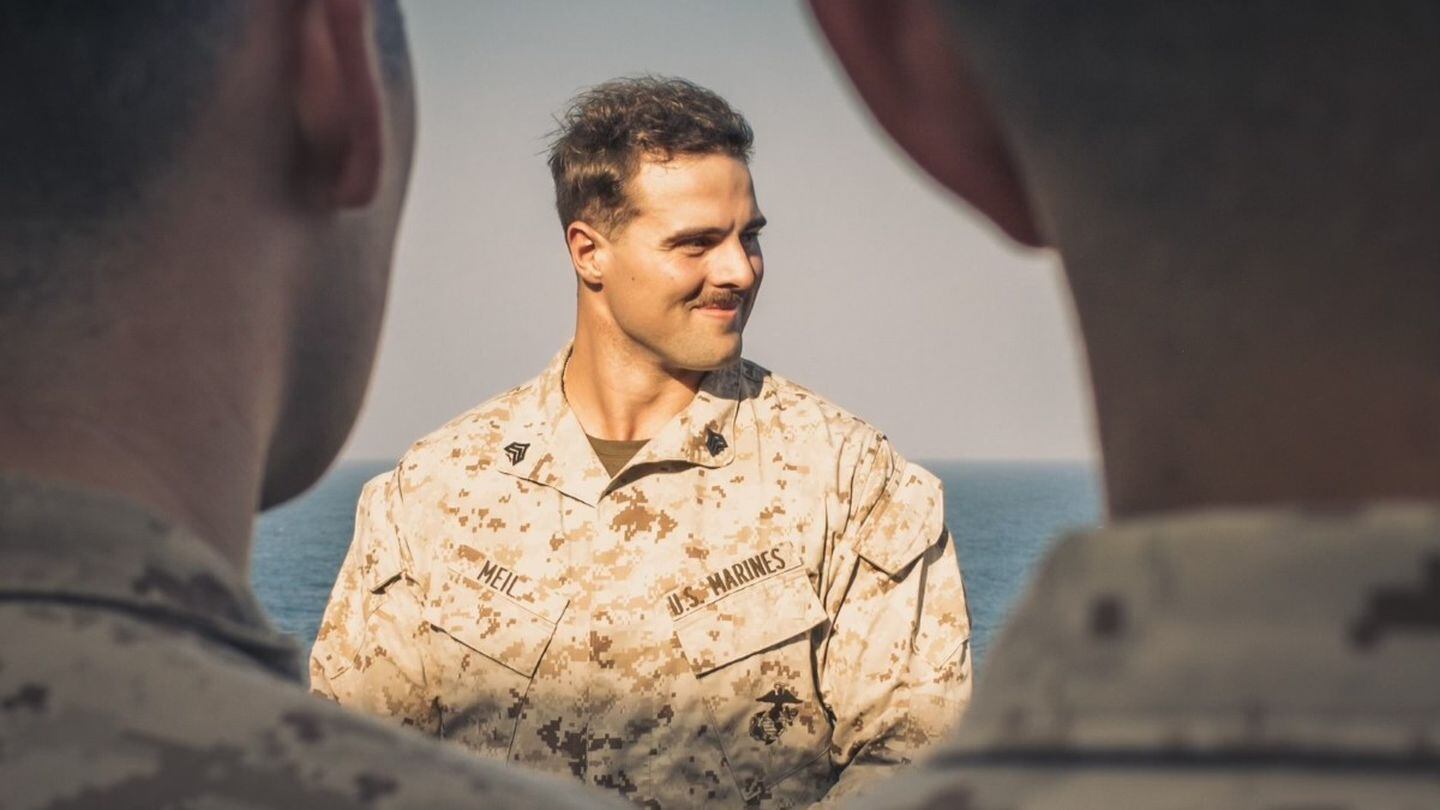
Marine shielded his student from grenade with his body — and survived
When then-Sgt. Brett Meil saw a student inadvertently activate a grenade during infantry training, he covered him with his body and prepared to die.
When then-Sgt. Brett Meil saw one of his students inadvertently activate a grenade during Marine infantry training in June 2023, he yelled at him to toss the grenade into the target area.
But the student froze with fear. In between three seconds and five seconds, the grenade would have exploded in the young Marine’s hand.
Meil yanked the student out of the training pit and swatted the grenade out of his hand. Unfortunately, it bounced off a wall and landed near the two of them.
So Meil covered the student with his body and prepared to die. He was sad for his wife, whom he had married 11 days prior.
Meil, 26, who survived the blast with extensive injuries, said in an interview with Marine Corps Times he acted out of a sense of obligation to his students.
“I look at these students as like my little brothers,” said Meil, who now is a staff sergeant.
Corporal honored for saving fellow Marine’s life after a hit-and-run
Brotherhood was what drove Meil to enlist in the Marine Corps in the first place. He grew up in Texas, where football “is basically a religion,” and had the importance of camaraderie drilled into him as he played the sport, he said.
As a high school senior in 2016, Meil got a call from a Marine recruiter soon after he’d heard that a college scholarship wouldn’t pan out.
They got lunch. Meil completed the enlistment process within 72 hours, he said.
After attending boot camp in 2016, Meil became a rifleman, spending time in Hawaii, Japan and California, as well as deployed with the 11th Marine Expeditionary Unit.
In October 2022, he started Marine combat instructor school at Camp Pendleton, California.
A few days before his graduation, his own instructors took him and the other soon-to-be combat instructors on a steep sunrise hike up one of the base’s big hills, Old Smokey.
At the top of the hill, Marines in the school received “halos,” elastic helmet bands with their names on them.
One of the school’s instructors told the Marines, These halos don’t put you before the students — they represent your role as their guardian angels, who must put the students first.
“That could have been hogwash, but I kind of took it to heart,” Meil said.
His goal as a combat instructor at California’s School of Infantry–West is to train young Marines to be ready should they have to go to combat, he said. He also serves as a mentor who models what a squad leader would be like in the fleet.
June 13, 2023, was supposed to be a typical day for him and his students on the grenade range, Meil said.
But one of Meil’s students messed up the order of the steps he was supposed to take before throwing the grenade, Meil said. The grenade’s safety lever dislodged.
After shielding his student from the blast, Meil awakened to his friends tending to him. He was taken to a hospital in the same ambulance as the student whose error could have cost him his life.
At first, Meil said, he was furious at the student, who had sustained only minor injuries. Then Meil, who is Catholic, felt “the peace of God” come over him.
“I was like, ‘You’re alive, I’m alive — we’re good, man,’” Meil recounted.
Meil said the care he received at the civilian hospital was so lacking — for instance, providers refused him pain meds — that he left after four hours, and ended up embarking on his recovery on his own couch.
He had 20 pieces of shrapnel throughout his body, including two in his nostrils, and a severe traumatic brain injury, he said. It should have taken him about a year to recover.
But with support from his wife and his leaders, and with an array of therapies, Meil was back training infantry students within six months.
Meil said the student whose life he saved was dropped from his class but completed infantry training with another class. Before he graduated, Meil told him: Your life was saved, and you need to be better for it. You need to be the most squared-away Marine you can be.
Meil said he hasn’t heard from the young Marine since.
Immediately after the incident that injured Meil, Marine Corps Training Command halted all live grenade training to allow for a safety investigation and review of standard operating procedures, according to Marine Corps Training Command spokesman Maj. Joshua Pena. The training resumed in January, Pena said.
There were no other mishaps involving live grenades in 2023 within Training Command, according to Pena.
In March, the United Service Organizations named Meil its Marine of the year.
“Brett’s unwavering courage and decisive actions in the face of personal risk exemplify the highest standards of conduct expected of Marines,” the USO wrote in a post about its service members of the year.
Meil said his command also has put him forward for a Navy and Marine Corps Medal, the Corps’ top award for noncombat heroism. Pena told Marine Corps Times he couldn’t comment on pending awards.
Meanwhile, Meil is still a combat instructor, and he still loves it.
On April 3, he went with his 16 students to the grenade range, for the first time since the blast.
Meil, who said he still experiences post-traumatic stress from that day in June 2023, made a beeline for the same pit from which he had scooped the student. He felt he had to conquer it.
His heart was racing. But another instructor threw alongside him first, and then he felt fine.
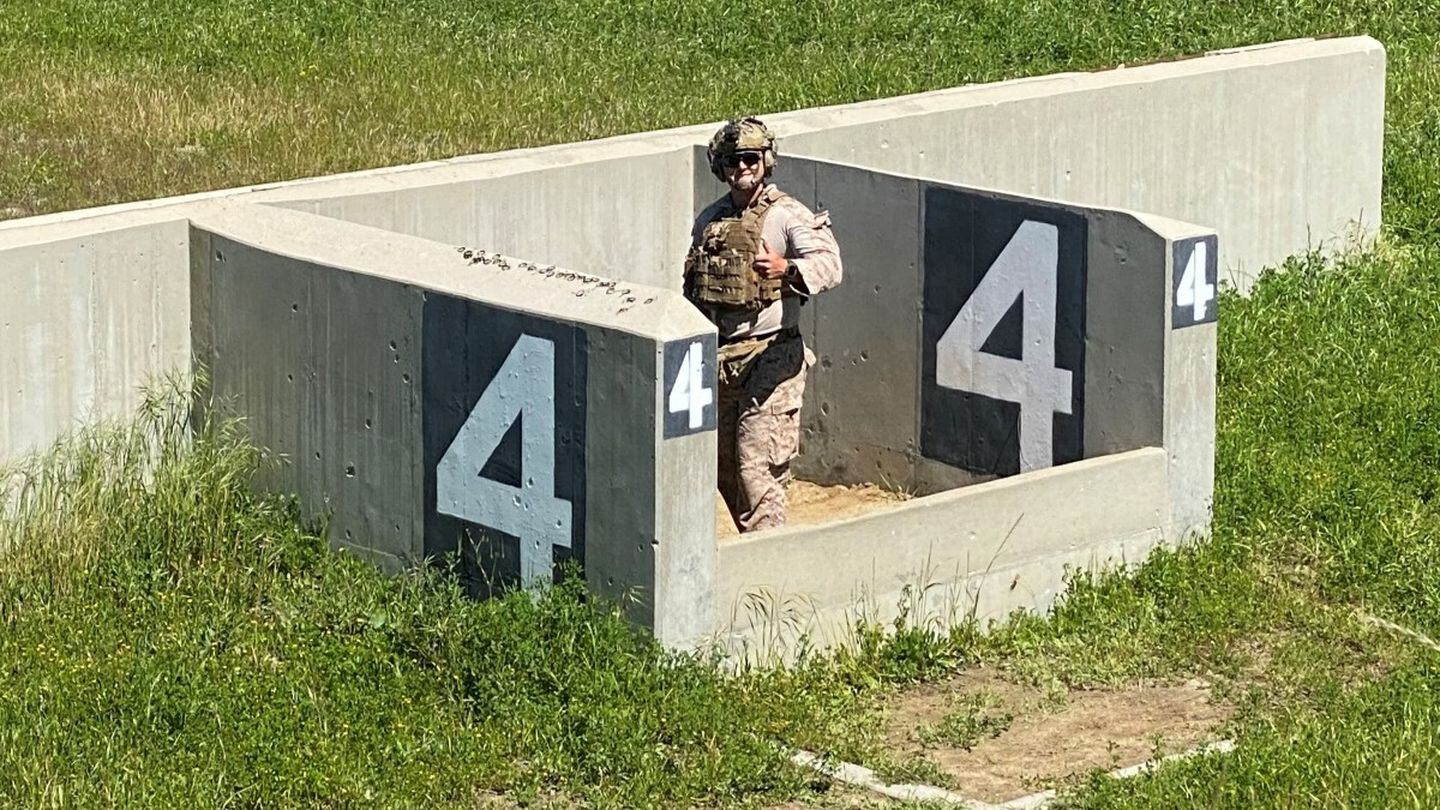
Meil threw. His 16 privates threw.
“It was good for me to get back on that horse,” Meil said.

Paws with a cause: Puppies train to help veterans manage mental health
Puppies from the group Warrior Canine Connection appeared on a live “puppy cam” to promote managing mental health care for veterans and others.
Sometimes, life can be stressful, and sometimes, to manage one’s mental health, one might need a little puppy love.
That’s what Warrior Canine Connection, a Maryland-based nonprofit that trains service dogs to provide recovery care for veterans and military families, highlighted Wednesday during a live “puppy cam” event with officials from the Department of Veterans Affairs and the Department of Health and Human Services.
About half a dozen six-week-old puppies scurried around the HHS lobby on their little paws while Dr. Shereef Elnahal, the under secretary of health for the Department of Veterans Affairs, emphasized the rewarding mental health outcomes that veterans can receive from interacting with canines.
“We have to start quantifying and explaining the incredible emotional and clinical benefit that these dogs offer to veterans,” he said, as one of the young pups lightly nibbled on his shoelace.
The VA and other groups offer a variety of resources for veterans to tackle mental health challenges, and the use of canines is increasingly becoming a desired option to help make a difference for those who may need a complimentary, albeit furry, form of support.

After about two years of training, service dogs with Warrior Canine Connection, which was created in 2011, have gone on to work at various VA and military treatment facilities, said Rick Yount, the executive director of the organization.
Yount detailed memorable examples of recovery among veterans he’s witnessed thanks in part to the healing power of the dogs. In one instance, he said a Marine veteran at an inpatient program for their severe post-traumatic stress disorder was struggling with serious night terrors.
“He would go three nights, no sleep, and then crash. There was no restorative, healthy sleep,” he said.
But after getting approval to allow one of the dogs to stay overnight, Yount said the veteran finally got the sleep he needed.
Elnahal also highlighted at the event, which coincided with Mental Health Awareness Month, a fairly recent VA program known as Puppies Assisting Wounded Service Members, or PAWS. That pilot initiative looks to break stigmas around mental health care and provide canine training to eligible veterans diagnosed with post-traumatic stress disorder. Yount said he and his team are providing dogs to some of the five sites involved.
The VA needs to continue exploring not just evidence-based research, Elnahal noted, but also an experiential review into how dogs improve veterans’ mental health as the department looks to validate funding the program, which some veterans described to him as lifesaving.
“There’s a case to be made that there’s a real clinical benefit, not just around supplemental treatment for conditions like PTSD, but there’s also just gratification that so many veterans have knowing that they’re training a dog that will go and help another veteran,” he said, adding that there are hopes to expand the PAWS program to additional VA medical centers.
Lawmakers float grant program to get service dogs to struggling vets
“What can be better than puppies,” said HHS Assistant Secretary for Health Adm. Rachel Levine, whose agency now has its own facility dog trained through Warrior Canine Connection, a two-year-old Labrador Retriever named Lt. Cmdr. Abigail.
Those interested in and eligible for canine care through Warrior Canine Connection can visit the organization’s website to learn more about applying for a dog. And those just looking to add a bit of paws-itivity to their lives can check out their ongoing, addictively adorable puppy cam.

Marine Corps’ longest-held Vietnam War POW, Harlan Chapman, dies at 89
Marine aviator Harlan Chapman once spent 2,657 days in captivity before his release in 1973. The retired lieutenant colonel passed away Monday, May 6.
By the summer of 1965, just months after the 9th Marine Expeditionary Brigade landed at Da Nang, the intensity of the Vietnam War was surging. Ramping up, too, were the rules of engagement.
President Lyndon B. Johnson was reportedly quoted as saying American pilots could not bomb an outhouse without his approval. Frustrated pilots found themselves “flying into heavily defended areas on predictable flight paths that exposed them to great risk while yielding often token results,” Stuart I. Rochester wrote in “The Battle Behind Bars.”
It was in this environment that then-Capt. Harlan Page Chapman and his fellow Marines of Fighter Squadron 212 found themselves during the opening months of the war. More than 30 American aviators had already been killed or presumed missing in action, while more than a dozen were captured.
After six frustrating and challenging months, Chapman was soon to discover that Johnson’s outhouse quip was, in reality, all too real.
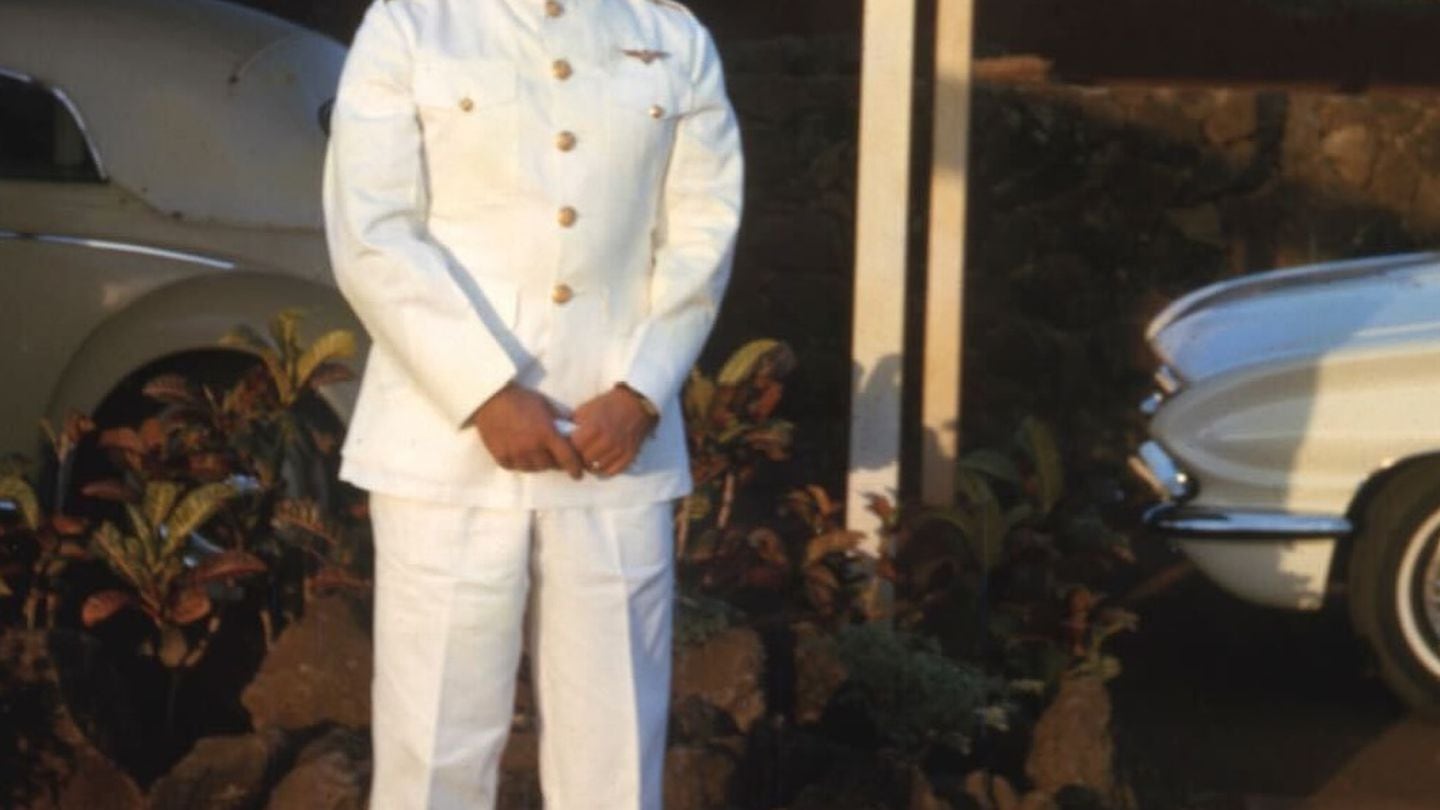
Born in 1934 in Elyria, Ohio, Chapman commissioned as a 2nd Lt. in the U.S. Marine Corps through the Navy ROTC program at Miami University in June 1956, serving for over a decade before he’d find himself peering down into North Vietnam’s dense jungles from the cockpit of his Vought F8 Crusader.
During a mission on Nov 5, 1965, Chapman’s strike group was tasked with pounding a heavily defended railroad and highway bridge deep within enemy territory of Hai Duong. Hitting the target required a perilous high-speed, low-level approach, according to Chapman’s Distinguished Flying Cross citation.
“As pilot of the last aircraft of a major strike group of 32 strike aircraft on target, he bravely and skillfully maneuvered his aircraft, in spite of the intense and lethal anti-aircraft fire, dived on the target, and delivered his bombs on the bridge,” his citation reads.
Strafed by anti-aircraft fire, Chapman was forced to eject, dislocating his shoulder in the process.
With that, Chapman became the first Marine aviator shot down in North Vietnam.
“There was Vietnamese all around me,” Chapman later recalled in a 2015 interview with The Chronicle. “I was conscious after a very soft landing, and I’m over my knees in mud — I wasn’t going anywhere. The local militia got me and paraded me around, and I ended up in the [Heartbreak section of] Hanoi Hilton that night.”
With his legs shackled and arms tied tightly behind his back, Chapman began to endure the first of many interrogations.
“[They] Pulled out a gun,” he told The Stockdale Center. “Threatened to shoot me … and after a while the pain got so bad that I knew I had to do something … so I gave them names like Clark Kent … just all sorts of false names.
“That went on for too long. I felt like hell that I didn’t stick to name, rank, and service number. You felt like you’ve really failed, you know if I was tough enough…”
Chapman was then placed adjacent to several other aviators in a cell block, where communication between prisoners was strictly forbidden.
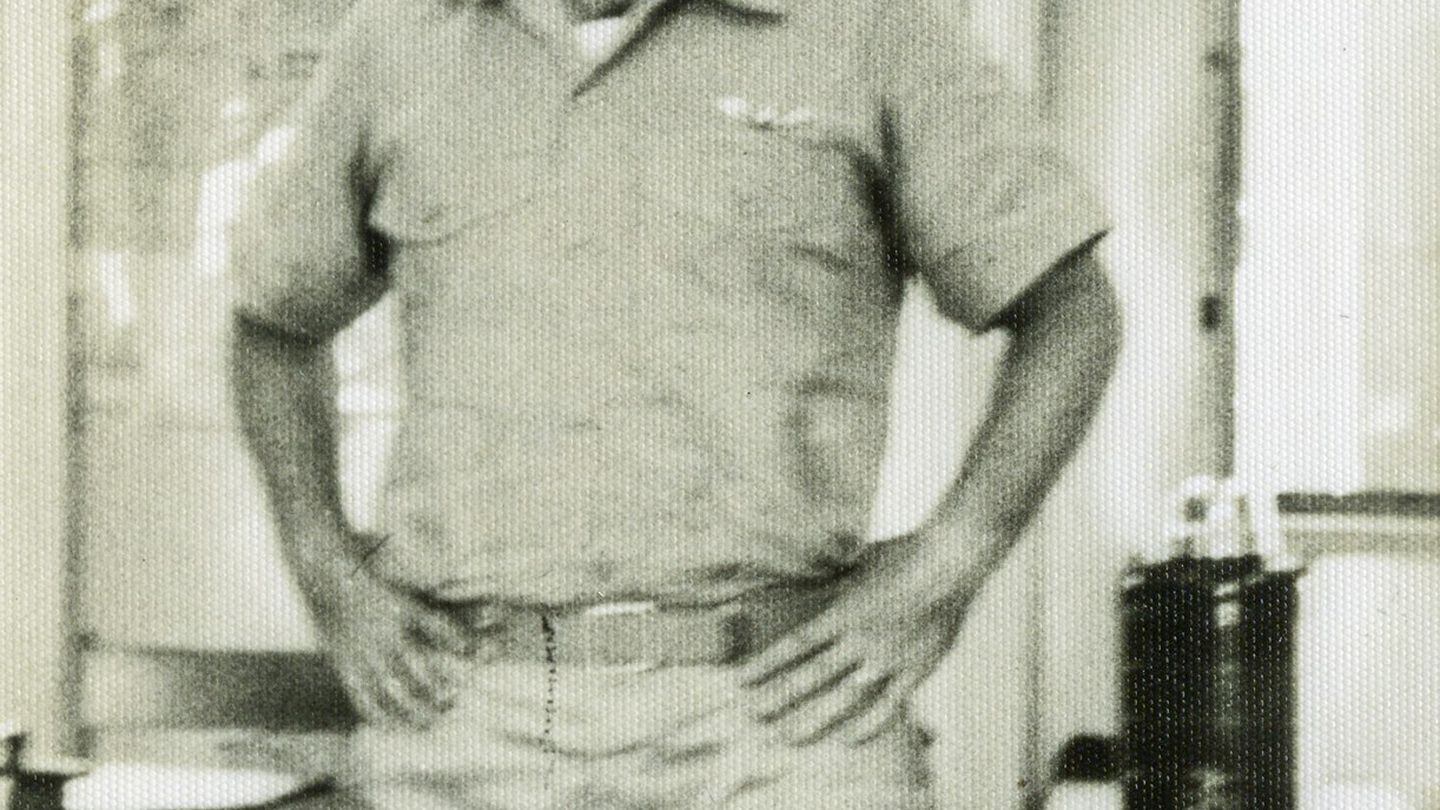
Men were thrown into solitary, locked in irons, strung up by ropes and beaten when they were caught trying to communicate, according to historian Geoffrey Norman.
Still, it was worth the risk for many. Using a method known as the “tap code,” prisoners were able to communicate and establish an organization.
“They’re in the same deep shit you’re in,” he told The Stockdale Center, recalling the budding camaraderie within the cell blocks.
Still, he conceded, he had never felt more alone.
The Marine would endure over seven years in the infamous prisoner of war camp, spending 2,657 days in captivity before becoming the first Marine Corps POW of the Vietnam War to be released during Operation Homecoming on Feb. 12, 1973.
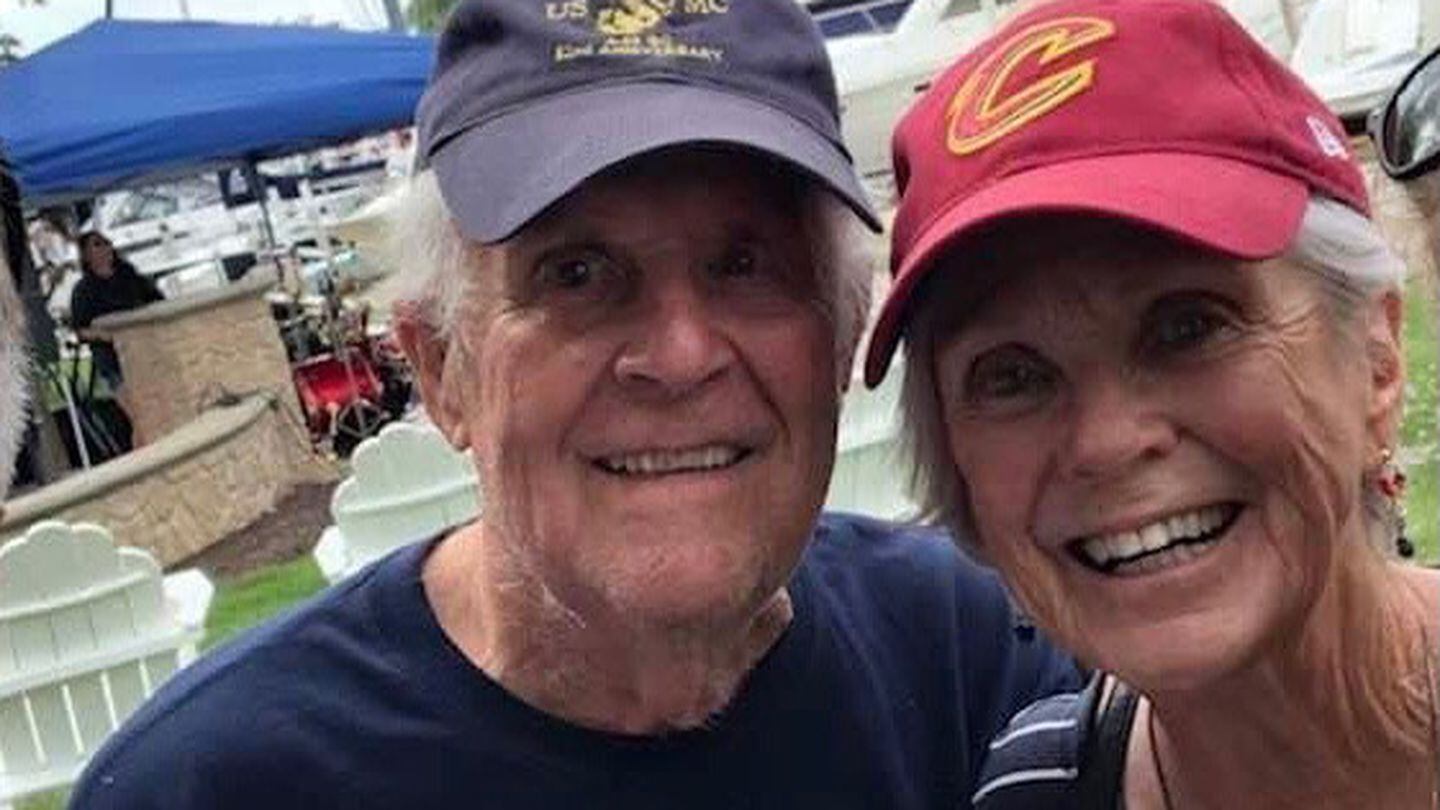
“It would be difficult, if not impossible, to relate the treatment of over seven years of captivity in the space allotted,” Chapman recalled to the Columbus Federal Voice. “However, I can sum up my opinion of the treatment by saying it was basically cruel. While in captivity, I was tortured many times, using ropes, cuffs, isolation and beatings.”
Despite his suffering, Chapman harbored no animosity toward the Vietnamese people, his wife, Frances “Fran” Chapman said.
“He was not a public prisoner of war,” she told The Chronicle. “Harlan was very quiet about it. He thought it was much more important that people know who he is now and his character. ... He didn’t tout being a prisoner.”
“He was very private about it,” Darold Hessel, Chapman’s stepson and a military veteran, told Military Times. “Except maybe when we’re young, he nagged us and said, ‘You know, at least in prison we had toothbrushes. Make sure you brush your teeth every day.’
“He came into the family when I was nine and he seemed like a superhero. He just was physically fit and morally strong and just so impressive to be around. ... He’s an American hero.”

Despite leading a quiet life removed from the public eye, Chapman’s story may have caught the eye of the wardrobe department from the 2021 blockbuster “Top Gun: Maverick.”
According to the U.S. Naval Institute, the vintage G-1 leather flight jacket Tom Cruise’s character wore to perfection in the 1986 “Top Gun” had been altered for the sequel.
“The jacket supposedly belonged to Maverick’s father, who flew Vietnam-era F-4 fighters,” but eagle-eyed viewers noted that the USS Oriskany and 3rd Marine Air Wing patches on the front of Maverick’s jacket may have been an homage Chapman, who was shot down the same day Maverick’s fictional father was said to have been downed.
Upon his release, Chapman took command of Marine Fighter/Attack Squadron 314 in El Toro, California, where he served from July 1974 until his retirement two years later.
Chapman was diagnosed with Parkinson’s disease and early-stage dementia in 2017. He died on Monday, May 6, 2024, his family confirmed with Military Times.
Lt. Col. Harlan Page Chapman was 89 years old.
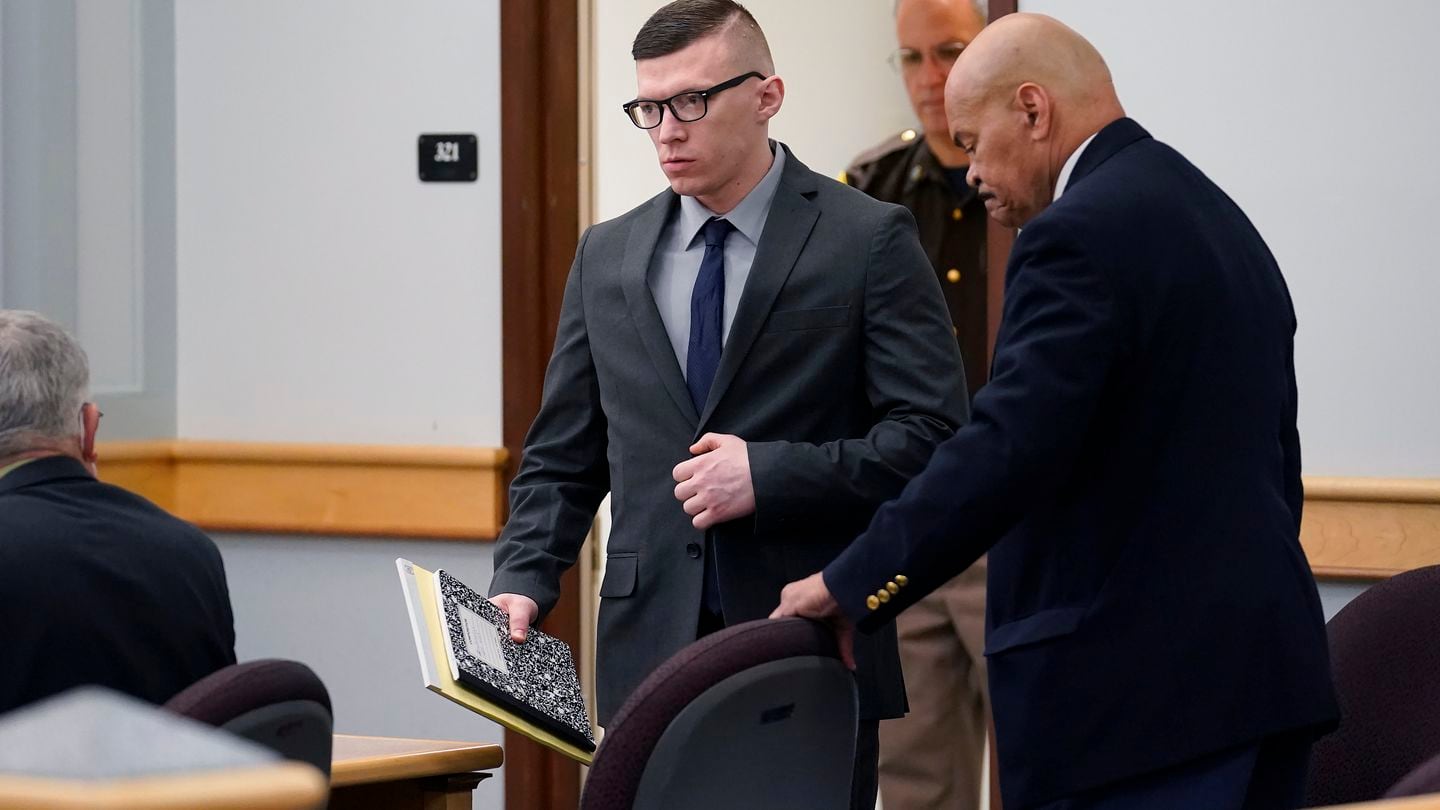
Trucker acquitted in deadly Jarheads crash asks for license back
Volodymyr Zhukovskyy, who was acquitted in the 2019 deaths of seven Jarheads MC members, testified on his request to reinstate his suspended license.
A commercial truck driver who was acquitted of causing the deaths of seven motorcyclists in New Hampshire testified at a hearing Wednesday on his request to reinstate his suspended license, while a lawyer for the state said he still played a role in the 2019 crash.
A jury in 2022 found Volodymyr Zhukovskyy not guilty of multiple manslaughter and negligent homicide counts stemming from the collision in Randolph that killed seven members of the Jarheads Motorcycle Club, an organization of Marine Corps veterans and their spouses in New England.
Zhukovskyy, who came to the U.S. as a child from Ukraine and had permanent residency status, had his Massachusetts license automatically suspended in New Hampshire after his arrest following the June 21, 2019, crash.
Testimony ends in deadly Jarheads Motorcycle Club crash trial
Based on his interviews with police at the time, “I thought I was the one that caused the accident,” Zhukovskyy, 28, testified at a four-hour administrative hearing in Concord in which he appeared via video. “I was like in a bubble with all the pressure.”
Prosecutors argued that Zhukovskyy — who had taken heroin, fentanyl and cocaine the day of the crash — repeatedly swerved back and forth before the collision and told police he caused it. But a judge dismissed eight impairment charges and his attorneys said the lead biker was drunk and not looking where he was going when he lost control of his motorcycle and slid in front of Zhukovskyy’s truck, which was pulling an empty flatbed trailer.
Zhukovskyy’s trial lawyers also said there was no evidence he was impaired at the time of the crash and that police did not make any observations in the hours afterward suggesting he was.
7 bikers connected to Marine JarHeads motorcycle club die in crash with pickup truck
Restoration of Zhukovskky’s license would depend on whether hearings officer Ryan McFarland decides Zhukovskyy drove “in an unlawful and reckless manner” that “materially contributed” to the accident, according to state law. McFarland took the case under advisement after the hearing. If he finds in favor of the state, Zhukovskyy’s license could remain suspended for up to seven years.
One former Jarheads member injured in the crash spoke out against restoring the license.
“You’re all in jeopardy of this guy driving again,” said Manny Ribeiro, speaking with reporters after Wednesday’s hearing. “I know what happened that day. I was there.”
The manslaughter acquittal at the time drew strong comments from Gov. Chris Sununu, who said the seven bikers “did not receive justice,” and from Attorney General John Formella, who said he believed the state proved its case.
Zhukovskyy said at Wednesday’s hearing he was driving around a crest on an east-west highway, saw a motorcycle coming in his direction, and applied his brakes.
“He responded in seconds,” his attorney Earle Wingate III, said. “He did not cause the crash.”
Marine veteran victim of Jarheads Motorcycle crash sues Registrar of Motor Vehicles
But David Hilts, an attorney for the state Department of Safety, challenged that account, based on expert reports. He said descriptions of where the tires were at the time showed Zhukovskyy didn’t see the motorcycle in advance.
“The impact happened. He jams on his breaks,” Hilts said.
Hilts questioned Zhukovskyy extensively about his drug use based on the police interviews. The attorney said in his closing statement that Zhukovskyy did everything possible to not answer his questions about drug use and impairment.
Hilts also brought up prior accidents Zhukovskyy was involved in, including one 18 days before the Randolph crash. He said both Zhukovskyy and the lead biker, Albert “Woody” Mazza Jr., materially contributed to the crash. Mazza, one of the seven who died, had a blood-alcohol level of 0.135%, well above the legal limit of 0.08%, according to his autopsy report.
Memorial for ‘Fallen 7′ Jarheads Motorcycle Club bikers killed in 2019 crash unveiled
At the time, Zhukovskyy’s license should have been revoked because he had been arrested in Connecticut on a drunken driving charge in May 2019. Connecticut officials alerted the Massachusetts Registry of Motor Vehicles, but Zhukovskyy’s license wasn’t suspended due to a backlog of out-of-state notifications about driving offenses. The Connecticut case is pending.
U.S. Immigration and Customs Enforcement detained Zhukovskyy after the 2022 verdict, citing previous convictions of drug possession, driving with a suspended license, furnishing false information and larceny. Zhukovskyy was taken from a New Hampshire county jail to a federal detention facility.
Zhukovskyy’s immigration attorney requested asylum for his client. In February 2023, a judge ordered Zhukovskyy’s deportation. But it’s unclear under how he could be sent to a country at war with Russia. The U.S. has paused repatriation flights to Ukraine and authorized Temporary Protected Status for qualified Ukrainians.
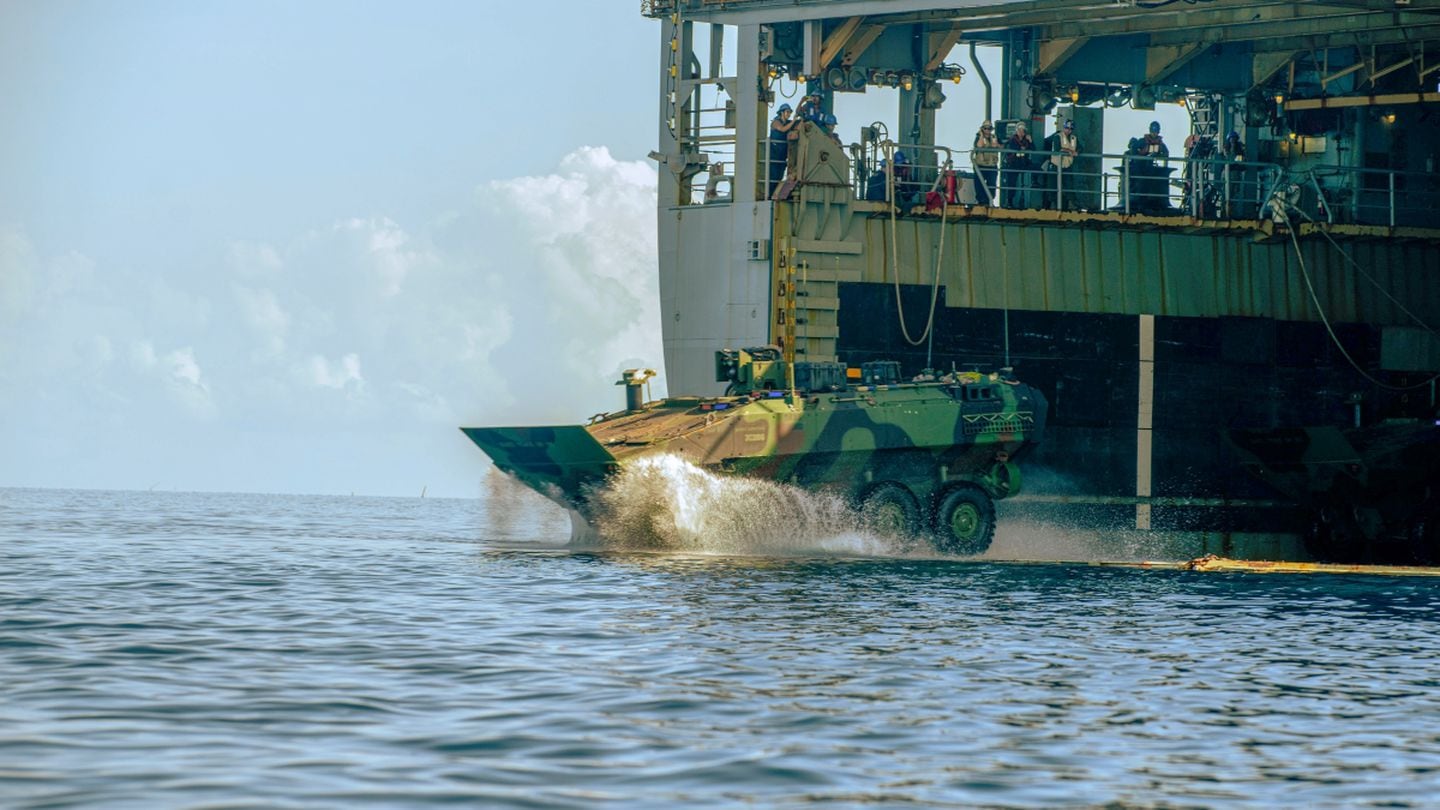
Marines put new amphibious vehicle to use overseas for 1st time
The journey to getting the amphibious combat vehicle ready for overseas operations has been bumpy.
The Marine Corps debuted its amphibious combat vehicles overseas, signaling the service believes it has resolved the training hiccups that previously had prompted it to restrict the vehicles’ operations.
The 15th Marine Expeditionary Unit’s amphibious combat vehicle platoon on Saturday conducted a live-fire exercise in Oyster Bay, Philippines, as the unit was deployed to the country for the massive bilateral exercise Balikatan.
Amphibious combat vehicles can emerge from an amphibious ships’ well deck, transport Marines through the waves and roll ashore. These capabilities make the vehicles a key part of how the Marine Corps, the military’s amphibious force, would launch amphibious assaults.
In the training exercise, the platoon launched the vehicles from the dock landing ship Harpers Ferry and formed into assault sections, according to a Marine Corps news release. Then the Marines approached and shot at targets ashore with their externally mounted Mk 19 40 mm grenade machine guns, controlled by remote weapons systems.
Instead of firing high-explosive grenades in the bay, the vehicles used 40 mm training rounds that mark targets with orange chalk, the release said.
After the exercise, the Marines and amphibious combat vehicles returned to the Harpers Ferry.
“The hard work and dedication of our Marines is what made today’s training successful,” Col. Sean Dynan, commanding officer of the 15th Marine Expeditionary Unit, said in the news release. “Today’s training is a proof of concept across the Marine Corps for successful ACV employment in its intended environment.”
The journey to getting the amphibious combat vehicle ready for overseas operations has been bumpy.
The amphibious combat vehicle is the replacement for the amphibious assault vehicle, the aging platform that Marines had used since the 1970s.
The newer vehicle is heavier and fitted with a V-shaped rather than flat hull to protect from underbody blasts. It is wheeled, rather than tracked, as its predecessor platform was.
In 2020, an amphibious assault vehicle sank off the coast of California, killing eight Marines and a sailor. The Corps ceased deploying amphibious assault vehicles in late 2021 amid the transition to the amphibious combat vehicle.
But from September 2021 to January 2022, the Marine Corps paused waterborne operations with the amphibious combat vehicle because of a problem with the tow rope.
After waterborne training resumed, a vehicle rollover in July 2022 prompted the Corps to suspend it again. The vehicles returned to the water in late September 2022, but a mishap a few weeks later led the service to cease most training with the vehicle in choppy waters.
The Marine Corps attributed these mishaps, in which no injuries were reported, to insufficient training on how the newer vehicle differed from its predecessor. After developing a new curriculum, it recertified operators and maintainers through a transition training unit at Camp Pendleton, California’s Assault Amphibian School.
In January, Assistant Commandant Gen. Christopher Mahoney announced the vehicles would deploy with the 15th Marine Expeditionary Unit in March.
Some elements of the unit, including the amphibious combat vehicle platoon, deployed aboard the Harpers Ferry on March 19, according to the news release. The amphibious transport dock Somerset has carried other Marines from the unit to the Philippines.
A third ship that is supposed to transport the unit’s remaining Marines, the amphibious assault ship Boxer, returned to San Diego for maintenance less than two weeks after it deployed.
Marines with the 15th Marine Expeditionary Unit are gathering insights related to the amphibious combat vehicles’ “employment, embarkation, maintenance requirements, logistics trains, and integration with our allies and partners,” the Marine Corps said in the news release.
In the summer, Marines based in Japan will receive their first amphibious combat vehicles, Col. Tim Hough, the Corps’ program manager for advanced amphibious assault, said May 1. BAE Systems has fielded 184 amphibious combat vehicles to the Corps, all of them to Camp Pendleton, California — the 15th Marine Expeditionary Unit’s home base.
Marines sending new amphibious vehicles to Japan in the summer
Twelve amphibious combat vehicles will arrive at the Okinawa, Japan-based 4th Marine Regiment in July, according to Hough.
“That’s important because now we’ll be in distinct geographical locations,” Hough said.
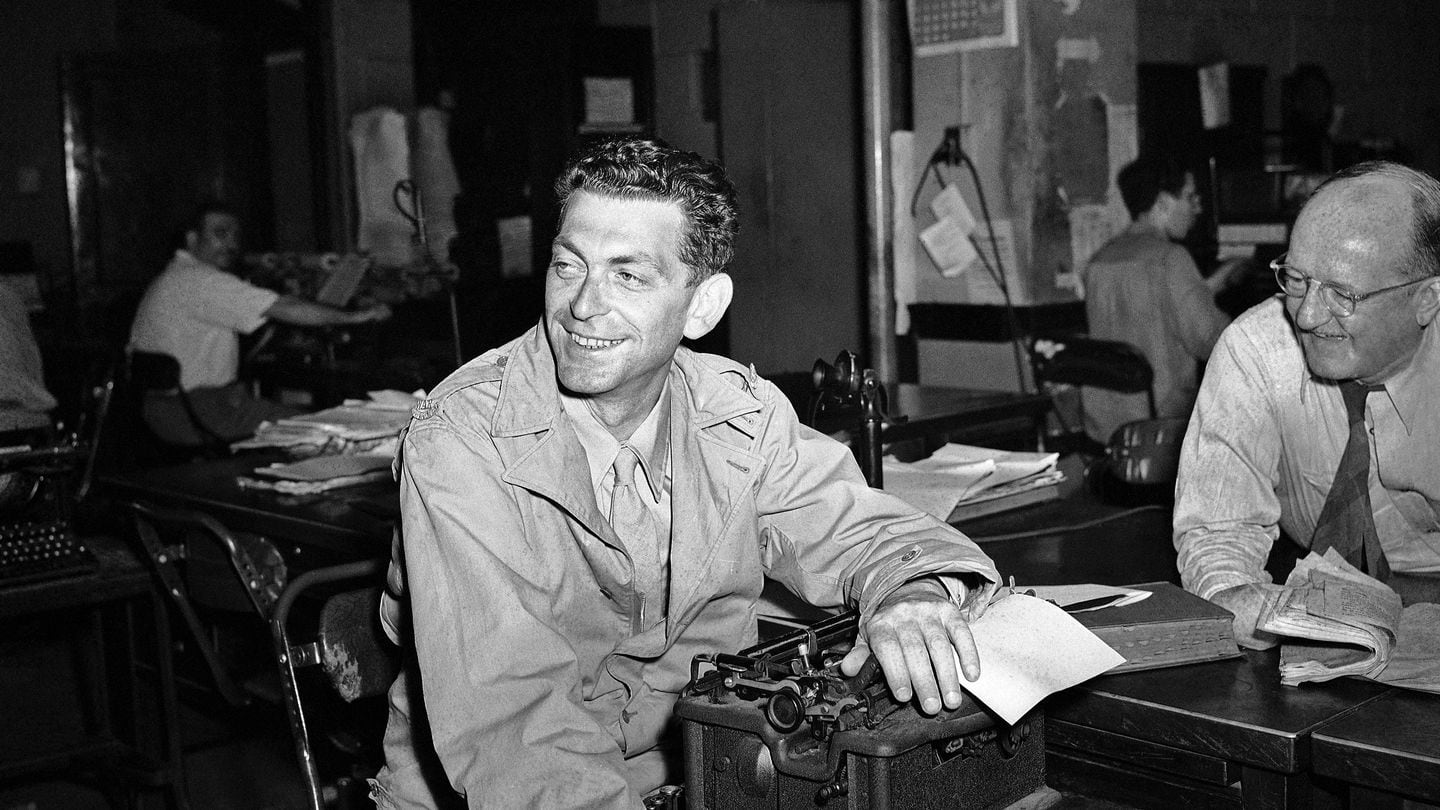
He was first to report V-E Day — then he was fired for it
AP war correspondent Edward Kennedy landed the biggest scoop of his career — while simultaneously ruining it.
“This is Ed Kennedy in Paris. The war is over and I am going to dictate. Germany has surrendered unconditionally,” the war correspondent said, according to an account of the call by Tom Curley, the Associated Press’ former president. “That’s official. Make the date[line] Reims and get it out.”
With that wire, AP war correspondent Edward Kennedy landed the biggest scoop of his career — while simultaneously ruining it.
Only able to dictate about 200 words before the connection was lost, Kennedy’s news about the conclusion of the world’s largest and bloodiest conflict traveled with such speed that inquiries were received in Paris even before he was cut off, according to the New York Times.
As one of 17 war correspondents to witness the official German surrender in Reims, France, in the early hours of May 7, 1945, Kennedy naturally sought to file posthaste.
However, the news remained embargoed, with military handlers insisting that the momentous occasion be kept secret for several hours. As the correspondents returned to their lodgings at Hotel Scribe in Paris that day, the embargo was extended for 24 hours without explanation.
We were “seventeen trained seals,” Kennedy caustically recalled in his memoir, “Ed Kennedy’s War: V-E Day, Censorship, & the Associated Press.”
The embargo was not, Kennedy learned, “for security reasons, which might have been an acceptable rationale, but for political reasons… It turned out that Russia’s leader, Joseph Stalin, wanted to stage a signing ceremony of his own to claim partial credit for the surrender, and U.S. officials were interested in helping him have his moment of glory,” according to an account in the Washington Post.
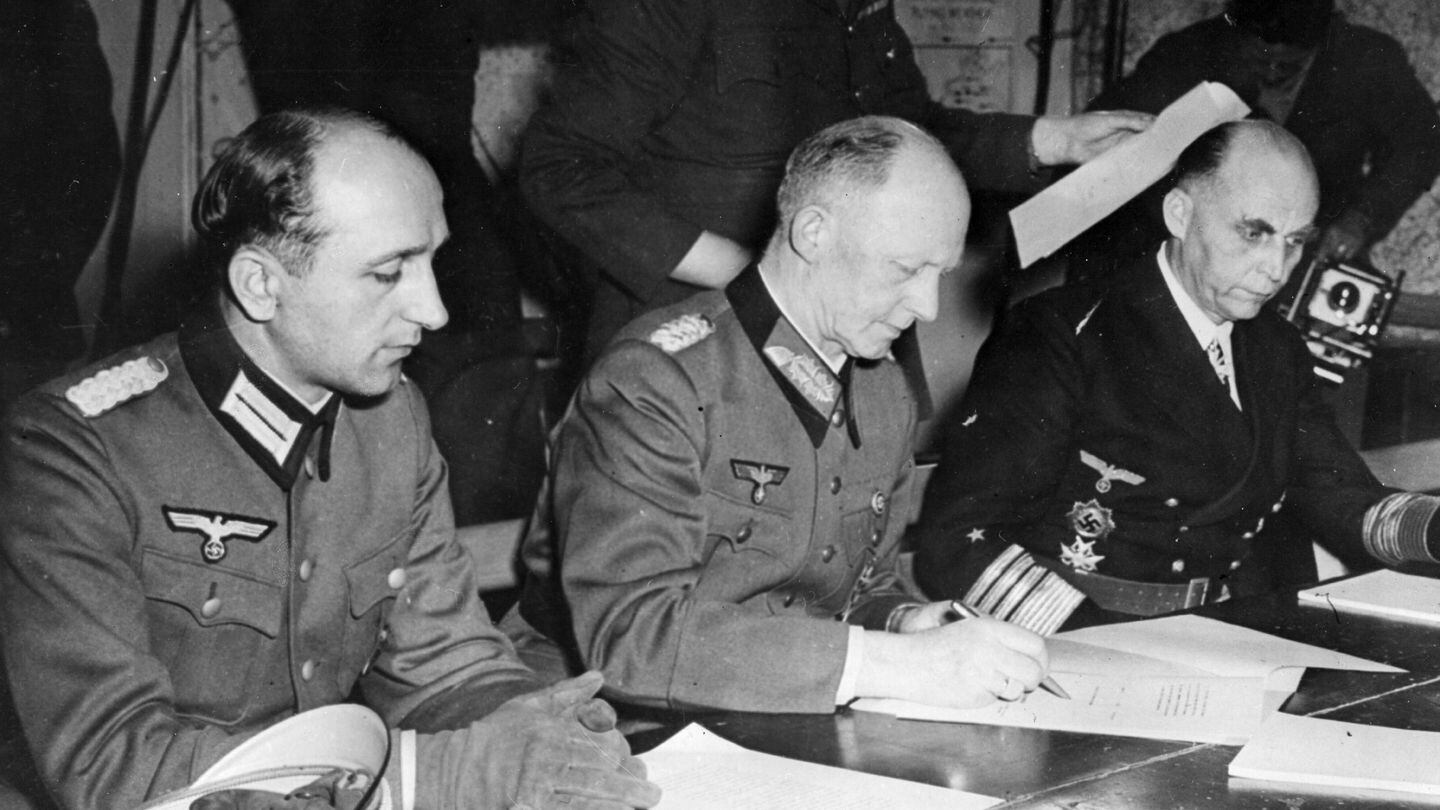
After hearing that the German high command had broadcasted the surrender from its headquarters in Flensburg, Germany, on May 7, Kennedy bristled.
“For five years you’ve been saying that the only reason for censorship was men’s lives. Now the war is over. I saw the surrender myself. Why can’t the story go?” he reportedly told a clerk at the hotel’s censor’s office.
The censor replied that he did not have the authority to release Kennedy’s story.
“All right then,” Kennedy retorted. “I give you fair warning here and now: I am going to file it.”
Calling up AP’s London office, the next words Kennedy uttered made history — and was on the wire within minutes.
The retribution for Kennedy was swift, however. Stripped of his credentials, the war correspondent was then ordered home by Allied leadership.
According to General Dwight D. Eisenhower, Kennedy’s suspension was “due to self-admitted deliberate violation of SHAEF regulations and breach of confidence.”
To add insult to injury, the following day Kennedy’s fellow correspondents, perhaps as jealous retribution, condemned his actions with a vote of 54-2, for “the most disgraceful, deliberate and unethical double-cross in the history of journalism.”
On May 10, Robert McLean, the president of the AP board, issued a statement saying AP “profoundly” regretted the story and, after placing Kennedy on an “indefinite suspension,” the news agency quietly parted ways with Kennedy several weeks later.
Despite the public rebuke, the reporter remained adamant that his actions were justified.
Upon his arrival in New York on June 4, Kennedy told a group of reporters that he “would do it again. The war over; there was no military security involved, and the people had the right to know.”
The reporter who observed the bloody Spanish Civil War; who covered Eastern Europe and the Balkans; who reported on the war in North Africa; and who joined the Seventh Army’s invasion of southern France in 1944 suddenly found himself without a job.
Kennedy was later hired as a managing editor by the sympathetic owner of the Santa-Barbara News-Press in California, the new position surely a step down for the veteran war correspondent.
In 2012, 67 years after Kennedy broke the news of the century, the AP issued a formal apology for its actions.
It was “a terrible day for the AP. It was handled in the worst possible way,” Curley stated. “Once the war is over, you can’t hold back information like that. The world needed to know.”
The apology was accompanied by a push from journalists to award a posthumous Pulitzer Prize to Kennedy. Although nominated for the prize in 2013, the WWII reporter failed to win the award. However, as USA Today reported, “Pulitzer rules don’t prohibit resubmissions,” and there have been several pushes in recent years for Kennedy’s recognition.
Kennedy, who died in 1963 after being struck by a car, did not live to see his vindication.
A monument to Kennedy now stands in Laguna Grande Park in Seaside, California, with the apt inscription: “He gave the world an extra day of happiness.”
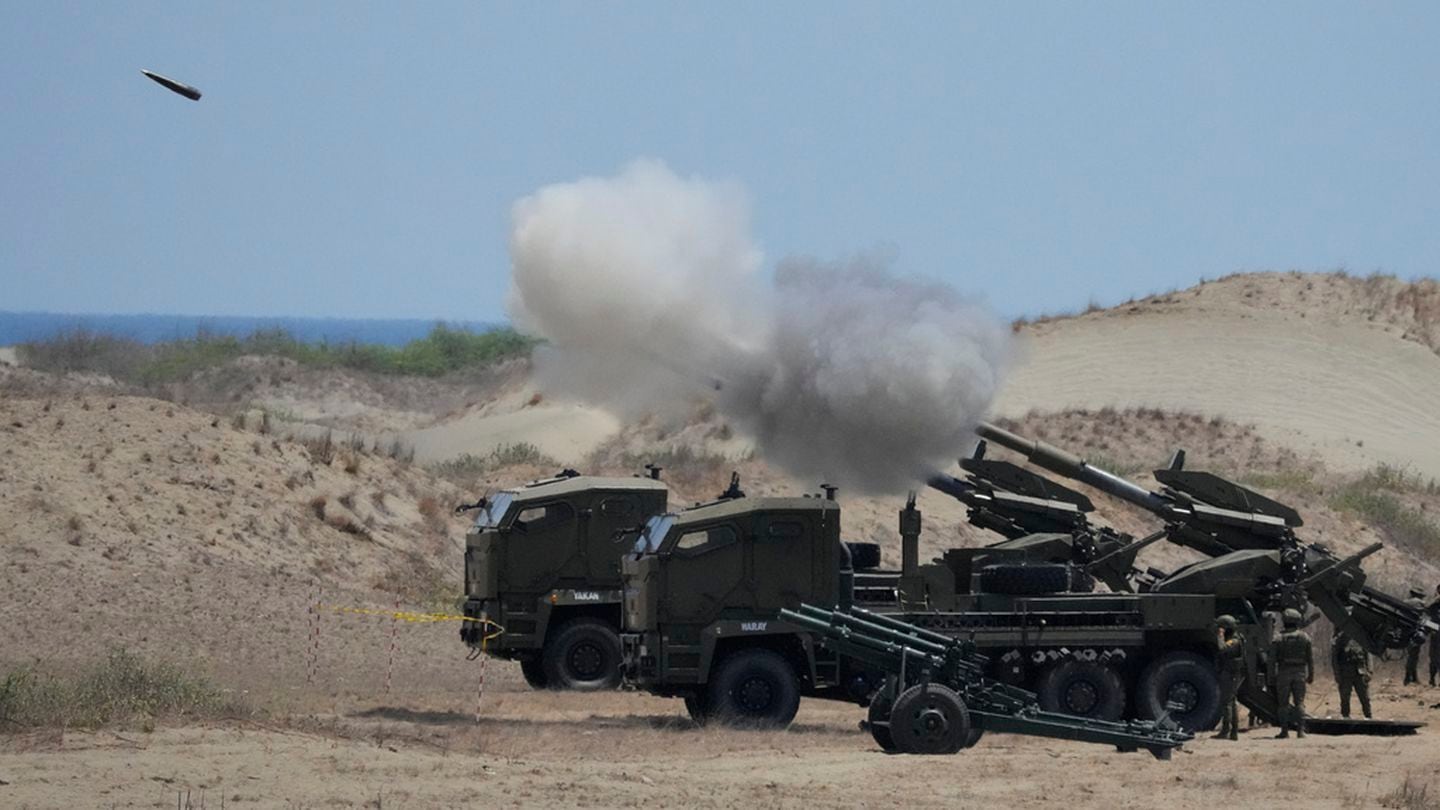
US, Philippine forces sink ship during drills in South China Sea
The drills come a year after the Philippines approved a wider U.S. military presence in the archipelago, which China opposed.
LAOAG, Philippines — U.S. and Philippine forces, backed by an Australian air force surveillance aircraft, unleashed a barrage of high-precision rockets, artillery fire and airstrikes Wednesday and sank a mock enemy ship as part of large-scale war drills in and near the disputed South China Sea that have antagonized Beijing.
Military officials and diplomats from several countries watched the display of firepower from a hilltop along a sandy coast in Laoag City in Ilocos Norte, Philippine President Ferdinand Marcos Jr.’s northern home province.
More than 16,000 military personnel from the United States and the Philippines, along with a few hundred Australian troops and military observers from 14 countries, were participating in annual combat-readiness drills called Balikatan, Tagalog for shoulder-to-shoulder. The drills, which started April 22 and end Friday, include a scenario of a foreign invasion of the Philippine archipelago.
It’s the latest indication of how the United States and the Philippines have bolstered a defense treaty alliance that started in the 1950s amid their concern in recent years over China’s increasingly aggressive actions in disputed territories in Asia.
Marcos has ordered his military to shift its focus to external defense from decades-long domestic anti-insurgency operations as China’s actions in the South China Sea become a top concern. That strategic shift dovetails with the efforts of U.S. President Joe Biden and his administration to reinforce an arc of alliances in the Indo-Pacific region to counter China.
How DC became obsessed with a potential 2027 Chinese invasion of Taiwan
China has angered the Philippines by repeatedly harassing its navy and coast guard ships with powerful water cannons, a military-grade laser, blocking movements and other dangerous maneuvers in the high seas near two disputed South China Sea shoals. They have led to minor collision that have injured several Filipino navy personnel and damaged supply boats.
“We’re under the gun,” Philippine Ambassador to Washington Jose Romualdez told The Associated Press in a telephone interview.
“We don’t have the wherewithal to be able to fight all of this bullying coming from China so where else will we go?” Romualdez said. “We went to the right party, which is the United States and those that believe in what the U.S. is doing.”
China has accused the Philippines of setting off the hostilities in the disputed waters by encroaching in what it says are its offshore territories, demarcated by 10 dashes on a map. It says the Chinese coast guard and navy have been forced to take action to expel Philippine coast guard and other vessels from those areas. The Philippines has repeatedly cited a 2016 international arbitration ruling based on the United Nations Convention of the Law of the Sea that invalidated China’s claim over virtually the entire South China Sea on historical grounds.
China did not participate in the arbitration complaint filed by the Philippines in 2013, and has rejected the ruling and continues to defy it.
After being hit repeatedly by missile and artillery fire and bombs dropped by U.S. and Philippine warplanes during the combat drills, the mock enemy ship sank as black smoke billowed from its stern. The target ship was made in China but decommissioned by the Philippine navy in 2020 due to mechanical and electrical issues, according to the Philippine military.
Philippine military officials said the drills were not directed at any country. China has opposed military drills involving U.S. forces as well as increasing U.S. military deployments in the region, which it warned would escalate tensions and endanger regional stability.
For the first time in years, the combat exercises were staged in and near the fiercely contested Spratly Islands area, which China has closely guarded with its coast guard, navy and suspected militia flotillas.
One defense strategy, two drastically different budgets
On Monday, U.S. and Filipino marines transported by Black Hawk helicopters practiced securing an airfield in the country’s northernmost town of Itbayat along the Bashi Channel near southern Taiwan. A small group of journalists, including from the AP, was invited to witness the air and ground combat maneuvers.
“They’re not operating in safe areas. They’re operating slightly further to the western bounds and they’re doing that in order to practice in ways that they might have to work for real,” said British Defense Attaché to Manila Bea Walcot, who watched the ship-sinking drill.
Washington and Beijing have been on a collision course over China’s increasingly assertive actions to defend its territorial claims in the South China Sea, and Beijing’s stated goal of annexing Taiwan, by force if necessary.
In February last year, Marcos approved a wider U.S. military presence in the Philippines by allowing rotating groups of American military forces to stay in four more Philippine military camps. That was a sharp turnaround from his predecessor, Rodrigo Duterte, who feared that a larger American military footprint would antagonize Beijing.
China strongly opposed the move, which allows U.S. forces to establish staging grounds and surveillance posts in the northern Philippines across the channel from Taiwan, and in western Philippine provinces facing the South China Sea.
China has warned that the deepening security alliance between Washington and Manila and their ongoing military drills should not harm its security and territorial interests or interfere in the territorial disputes. The Philippines countered that it has the right to defend its sovereignty and territorial interests.
“An alliance is very important to show China that you may have all the ships that you have, but we have a lot of firepower to sink all of them,” Romualdez said.
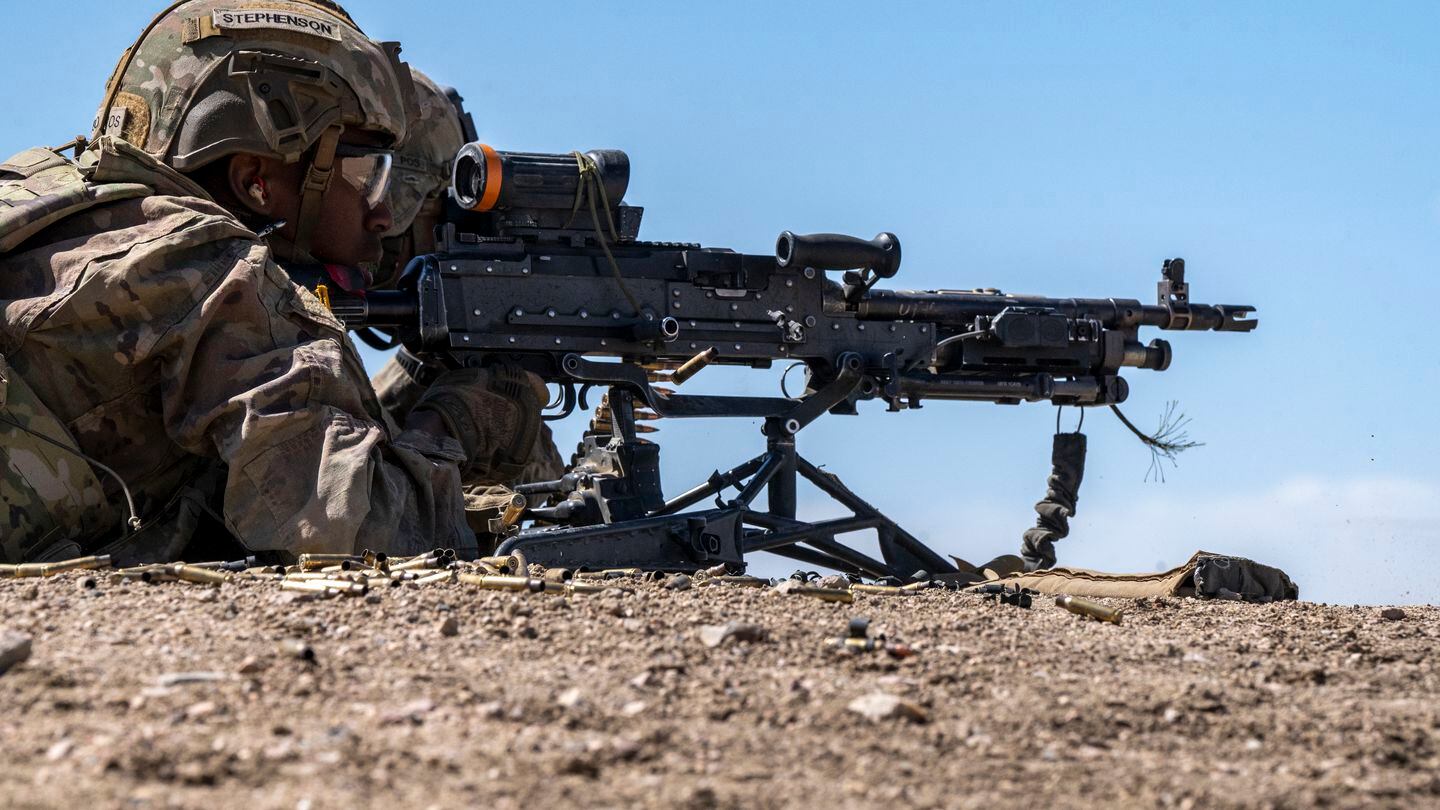
Special operators set to pick light machine gun in new caliber
The .338 caliber has been adopted for sniper use. This is its debut in machine guns.
TAMPA, Fla. — U.S. special operations officials are set to select a new machine gun in the coming months to give shooters .50-caliber-like performance in a lightweight machine gun package, according to the program manager for special operations lethality.
Army Lt. Col. Tosh Lancaster said here Tuesday during the Special Operations Forces Week conference that Special Operations Command will select its so-called Lightweight Medium Machinegun, or LWMMG, by Oct. 1.
First announced in 2017, the project focused on the .338 Norma Magnum to provide shooters with more distance and lethal punch in a weapon that one person could carry and use. The .338 Norma Magnum is a new entry into military operations.
The three companies competing for the contract are Ohio Ordnance Works; Sig Sauer; and a True Velocity and Lonestar Future Weapons team.
Lancaster previously said the weapon is scheduled for fielding in fiscal 2026.
Sig Sauer in recent years won the Modular Handgun System contract to provide a 9 mm sidearm to all military branches as well as the Army’s Next Generation Squad Weapon rifle and automatic rifle contract.
Companies delivered three weapons each in February and a total of a dozen each in late April for endurance testing, according to documents.
Basic specifications of the Lightweight Medium Machinegun from the competitors are:
- Ohio Ordnance Works Recoil Enhanced Automatic Precision Rifle, or REAPR: a 26.8-pound, 54.5-inch weapon with a rate of fire of 550 rounds to 660 rounds per minute.
- Sig Sauer’s MG 338: a 24.1-pound, 50-inch weapon with a rate of fire of 600 rounds per minute.
- True Velocity’s Recoil Mitigation 338: a 25-pound, 49-inch weapon with a rate of fire exceeding 500 rounds per minute.
U.S. troops began noticing range limitations in Afghanistan with their M240 machine guns, chambered in 7.62 mm, that reached about 1,500 meters. The M2 .50-caliber machine gun could reach farther, up to 2,000 meters, but weighs 84 pounds.
Weapons and ammunition experts in the Army, Marine Corps and other government groups began evaluating the small arms suite of ammunition and platforms as those reports emerged.
One specific effort on the .338 included the Irregular Warfare Technical Support Directorate.
In 2021, Army snipers began using the .338 Norma Magnum for the MK22 Precision Sniper Rifle; SOCOM has fielded an advanced sniper rifle that can fire the .338 Norma Magnum, .300 Norma Magnum or 7.62 mm with barrel changes.

First Lady honors World War I veterans, advocates of national memorial
The National World War I Memorial, which opened to the public in April 2021, will be completed in September of this year.
First lady Jill Biden delivered remarks in the East Room of the White House on Tuesday during a reception to honor World War I veterans and those involved in the creation of the national World War I Memorial.
Staff, volunteers and others involved in the endeavor gathered as Biden and Terry Hamby, chairman of the U.S. World War I Centennial Commission, spoke to a room that included descendants of World War I veterans.
“America will always remember your families’ sacrifice,” Biden said. “Military spouses and children may not wear the uniform, but they serve our country, too. That was true a century ago, and it’s true now. ... Your work commemorates a generation who changed our world with their courage and their sacrifice.”
The memorial, which is located at Pershing Park near the White House, is one of two national sites designated as World War I memorials. The other is located at the World War I Museum and Memorial in Kansas City, Missouri.
Hamby said the idea for a national memorial began when Edwin Fountain, a former vice chair of the commission, saw the local District of Columbia War Memorial to World War I service members on the National Mall in Washington. Fountain thought, “Why not a national memorial?” Hamby told attendees.
“[The memorial] began with the families who sent their sons and daughters off to a country most had never visited, fight in war they certainly didn’t start, but more importantly, were willing to die for peace and liberty for people they never met,” Hamby said.
President Barack Obama signed the World War I Centennial Commission Act in 2013, which created the 12-member body to help provide input and direction for a national memorial, Hamby added. The 2015 National Defense Authorization Act later approved the creation of a memorial to honor the 4.7 million Americans who fought in World War I — and the 116,516 service members who died in the war.
The National World War I Memorial opened to the public in April 2021, but it will not be completed until September of this year. The focal point — a 58-foot bronze sculpture depicting a soldier’s journey through the war — will be installed in July.
“The soldiers’ journey tells the story of a soldier and his comrades as they experience the horrors of war, but more importantly, of our great nation moving forward into a new century” Hamby said.
The last U.S. World War I veteran, Frank Buckles, died at age of 110 in 2011.
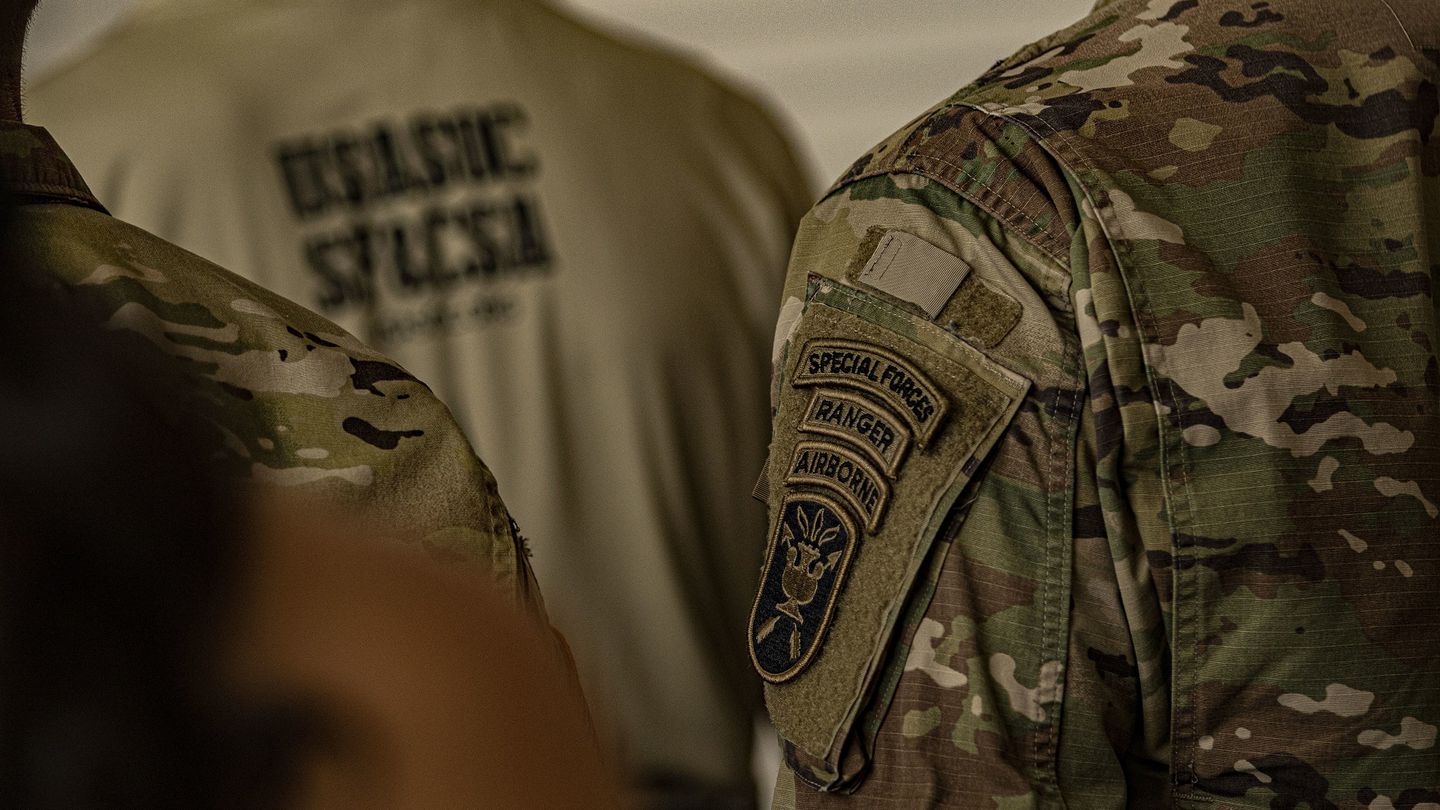
The power of relationships and partnerships forged by special ops
The history of special operations in the U.S. is replete with examples that demonstrate how vital this can be.
In over three decades of being privileged to serve in U.S. special operations forces (SOF), I witnessed many forms of power in dozens of campaigns, battles, and other operations across four continents. These ranged from physical, kinetic power, to the use of technology, information, intelligence and others. Whether this power was tactically, operationally, or strategically employed, each form was often profoundly impressive.
And yet, I came to realize that one type of power often stood alone and, in many ways, was more important than all the rest. Ironically, it was also the least tangible or physical. Its dimensions cannot by measured by a micrometer, or its existence weighed on any scale. Indeed, its strength lies in the fact that it is deeply emotional, psychological, and highly personal.
This vital form of intangible power originates from the thoughtful, deliberate, and persistent creation of relationships that lead to partnerships, and this intentional effort is irreplaceable for advancing and protecting U.S. national security interests. The history of special operations in the U.S. is replete with examples that demonstrate how vital this can be, and I offer two specific examples that are illuminating and instructive.
As a very young Army Special Forces officer in the 1980′s oriented on the Pacific region, my colleagues and I frequently deployed to train with the Philippine Scout Rangers, the Philippine Marines, and other formations of their armed forces. This cultivated a broad network of strong friendships that flourished on both sides for decades. When relations between the U.S. and the Philippines significantly dwindled after 1991 because of the closure of Subic Bay and Clark Air Force Base as U.S. installations, the American-Philippines relationship deteriorated even more sharply during the six years President Duterte was in office. And yet, the personal bonds of friendship and shared experiences between U.S. special operations forces and the Armed Forces of the Philippines endured, however informally. Subsequently, in 2014 when the Islamic State dramatically emerged to threaten the Philippines, this enduring informal network of American special operators and Philippine military personnel became indispensable in combating this threat by enabling a very rapid renewal of a strong and effective operational partnership. This was most vividly demonstrated during the battle for Marawi City in Mindanao, and ultimately enabled the Philippines to defeat ISIS. Strong relationships continue to pay dividends today to enable an ever-stronger strategic partnership between the U.S. and the Philippines in their combined efforts to contest China, which blasted water cannons at Philippine vessels and rammed one carrying Philippine Chief of Staff of the Armed Forces Romeo Brawner in December 2023.
Another powerful example flows from the counter-ISIS fight in Iraq and Syria. After the fall of Saddam Hussein’s regime in 2003, special operations personnel spent years in combat alongside both the Kurdish Peshmerga and Iraqi special operators combatting insurgents and Al-Qaeda networks. This led to deep personal bonds of trust and affection across these forces that endured for years and remained intact long after the complete withdrawal of U.S. forces from Iraq in 2011. Then, in 2014 when ISIS suddenly emerged to seize the city of Mosul and begin marching toward Baghdad, the hasty redeployment of American special operations forces into Iraq quickly became operationally and strategically effective because of the enduring relationships between these forces, despite years of physical separation. Both the Peshmerga and Iraqi operators welcomed their American counterparts with open arms, and neither side had to waste time in developing trust or having to learn about what each side had to contribute to the fight. Instead, all were able to join forces rapidly and effectively in a committed partnership that endures to this day.
These examples illustrate how strategically irreplaceable these deeply committed relationships can be, and how they can blossom into strategic partnerships. The special operations community always appreciates that such relationships in another land require long-term investments of time, demonstrated reliability, and persistent presence whenever possible. Doing so, simply put, is part of SOF’s “DNA.”
Just as importantly, these SOF practices can provide invaluable advantages, opportunities, and outcomes for more than just U.S. military goals. For decades, U.S. SOF has deliberately invested in consistent integration and collaboration with many other U.S. agencies and departments, ranging from intelligence agencies to the State Department and its foreign service, and beyond. Today, a vast network of personal relationships persists between U.S. SOF and dozens of U.S. interagency partner organizations. In many cases, these relationships were initiated during deployments in combat environments over the past two decades. Most importantly, just as this practice enabled U.S. SOF to develop strategic partnerships with global actors, so has this practice with other agencies fostered genuine operational and strategic partnerships that directly enable both U.S. SOF, and these civilian agencies, to become far more effective.
Today, the entire U.S. military is a well-resourced and highly skilled enterprise. Amidst a world marked by escalating mistrust, instability and the proliferation of violence sponsored by both nation-states and extremists, all military branches are now urgently seeking new ways to achieve tactical, operational, and strategic advantages. Accordingly, the old saying that protecting America and her interests requires harnessing “all instruments of national power” is even more true than ever before.
U.S. special operations forces contribute to all these efforts in numerous ways. However, its enduring strength lies in its time-proven ability, skill, and enthusiasm for deliberately cultivating long-term and deep relationships. By intentionally nourishing these relationships, the special operations community aims to evolve them toward someday becoming genuine operational and strategic partnerships. In so doing, U.S. SOF enhances and enriches its contribution to all of America’s efforts to deter aggression, or should those efforts fail, to swiftly and decisively respond to threats, protect national interests and promote stability worldwide.
Retired Army Lt. Gen. Michael K. Nagata, enlisted in 1982, attended Army Officer Candidate School and later volunteered for U.S. Army Special Forces. Throughout his 38-year career, he served in many special operations and interagency roles, participating in dozens of contingency and combat operations abroad. His final assignment was Director of Strategic Operational Planning at the National Counterterrorism Center. Today, he works as the strategic advisor and senior vice president for CACI International, a defense and technology company that provides significant capabilities and assistance for U.S. SOF and other national security needs.
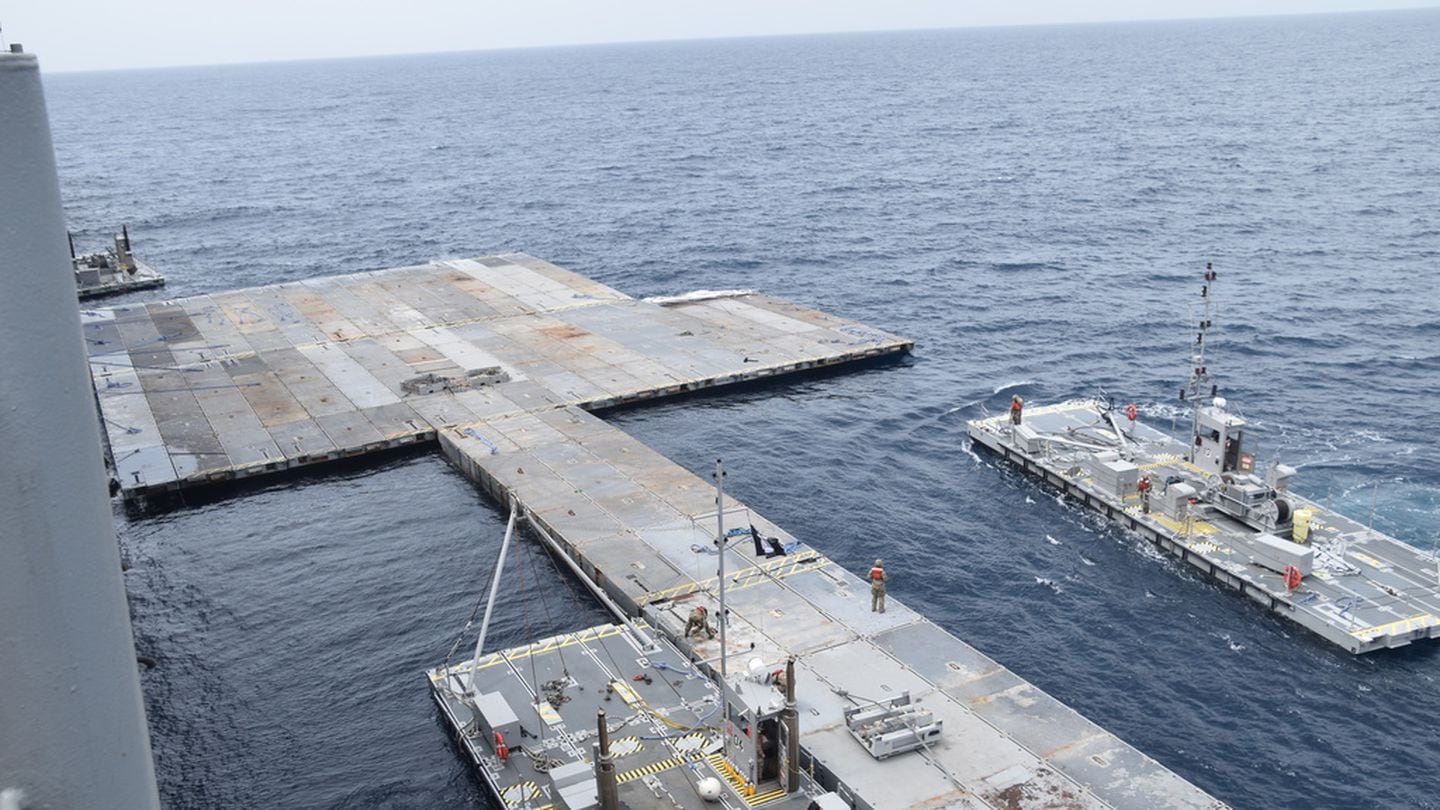
US military finishes Gaza pier, but plans to move it into place paused
High winds and sea swells are making it too dangerous for U.S. military personnel to install the pier at the Gaza beach, the Pentagon said.
The U.S. military has finished construction of a temporary pier and causeway that will be used to deliver aid to Gaza through a maritime system, but plans to move it into place on the shore are on hold due to weather and other logistics.
Sabrina Singh, a Pentagon spokeswoman, told reporters on Tuesday that U.S. military ships and the assembled pier are at Israel’s Ashdod port. High winds and sea swells are making it too dangerous for the U.S. military to install the pier at the Gaza beach.
Singh says the U.S. hopes to install the pier and causeway later this week, if the weather permits.
Meanwhile, humanitarian aid is being loaded onto a large container ship, the Sagamore, in Cyprus, for eventual delivery to Gaza, Singh said.
The U.S. hopes the pier can be used to bring more humanitarian aid into Gaza, where the U.N. says there is a full-blown famine in the north.
US military pier in Gaza to cost $320 million, Pentagon estimates